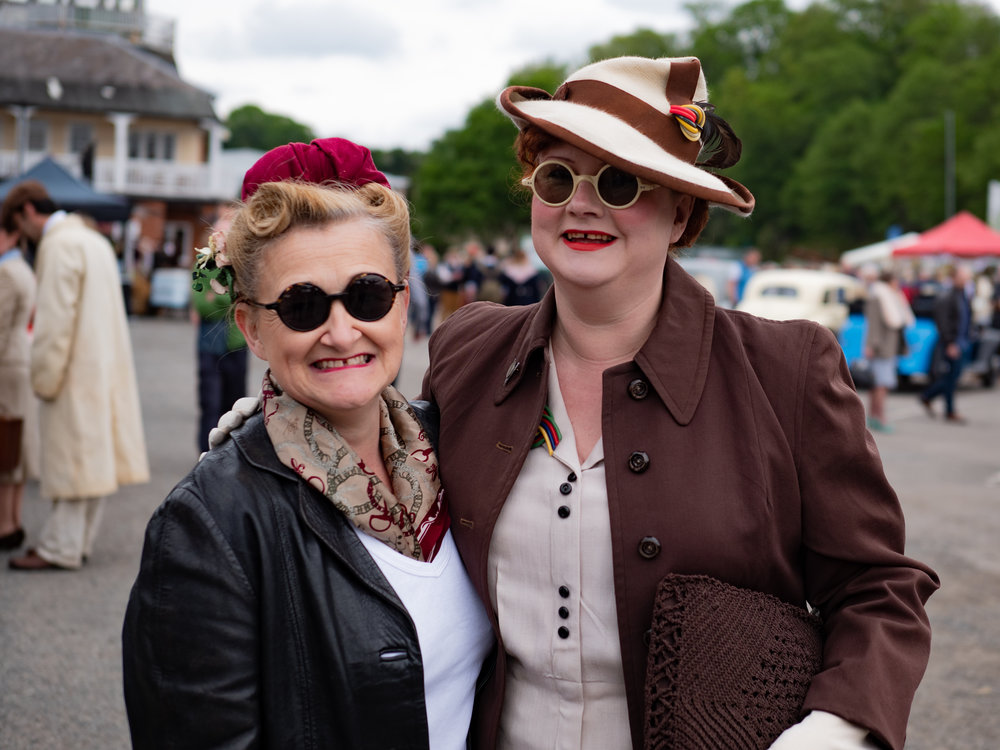
Dress-up days such as the annual 1940s Revival event at Brooklands Museum offer rich pickings for the photographer. It is a given that people who go to a lot of trouble to dress in-character or in-period love being photographed. I have been a regular visitor for several years and have never come away with an empty camera.
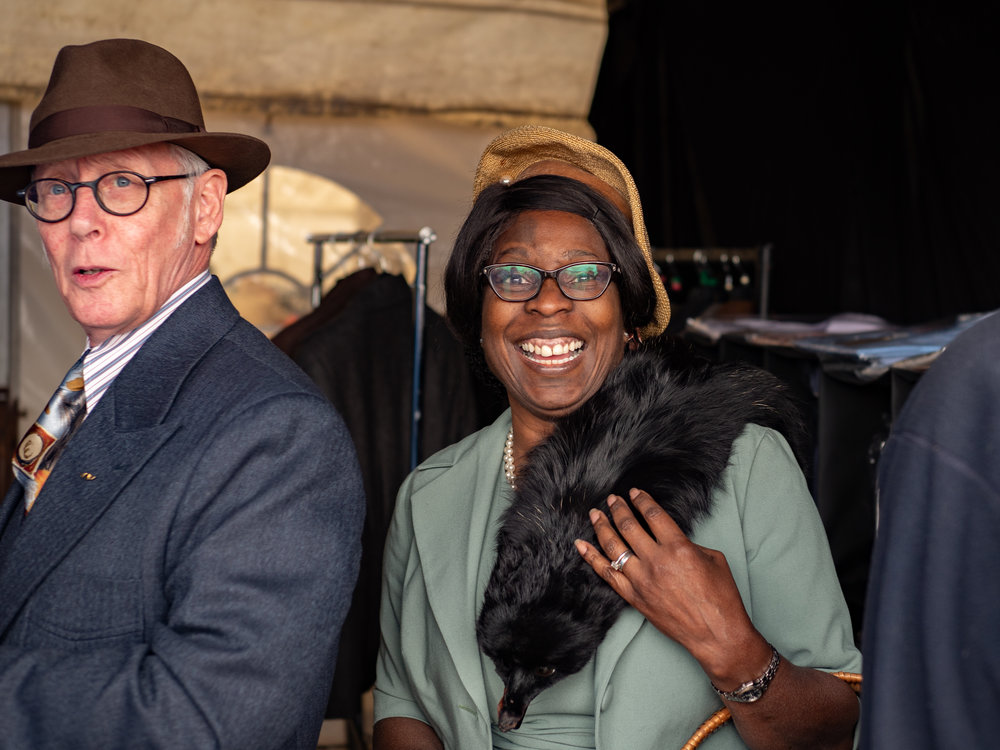
This year’s event took place last Saturday and I had been looking forward to it for weeks. Party as a result of the arrival of an Olympus O-MD E-M1 Mk II kit for review, we decided this year to make it a micro four-thirds fest. Macfilos contributor Ken Fung came along to share the work and help juggle the two cameras and three lenses we’d chosen for the event. As it happens, Ken managed to produce some of the more successful images of the day, especially with the long-reach 75mm Olympus f/1.8 prime. His photography has come on by leaps and bounds since he bought his Panasonic GX8 and Olympus 12-40mm lens a couple of years ago.
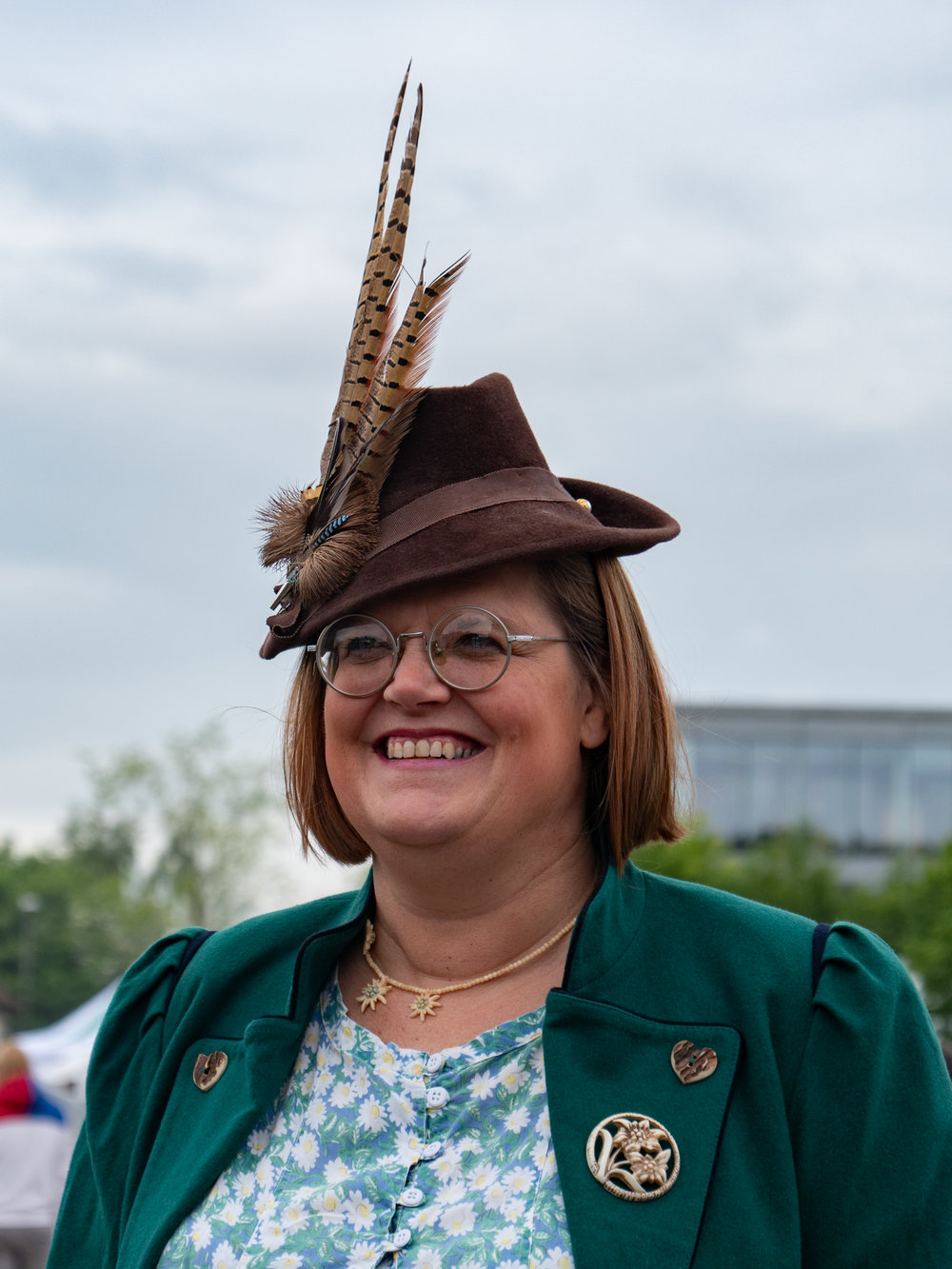
I stuck throughout the day with the Panasonic G9 while Ken handled the Olympus. In the past week, I’ve had a lot of experience of the Olympus, certainly enough to write a review, and love the camera. I was relying on Ken to add his views and get some interesting shots that could help illustrate both this article and the eventual review of the Olympus.
After much discussion, we took the Leica DG 12-60mm Vario-Elmarit which was mounted most of the day on the Panasonic. Ken packed the Olympus 12-40mm (which we didn’t use in the event), the Olympus 25mm PRO and the rather amazing Olympus 75mm f/1.8 that I’ve raved about before.
The loan Olympus 40-150mm f/2.8 Pro was left at home on this occasion because I reasoned it might look too threatening for more intimate portrait shots. I think I made a mistake. The 75mm Olympus f/1.8, however, was a last-minute addition to the bag and proved a good compromise. It is super compact, looking nothing like a 150mm prime which, in fact, it is. It’s discreet but is long enough to grab those candid shots when subjects are not doing their best to pose.
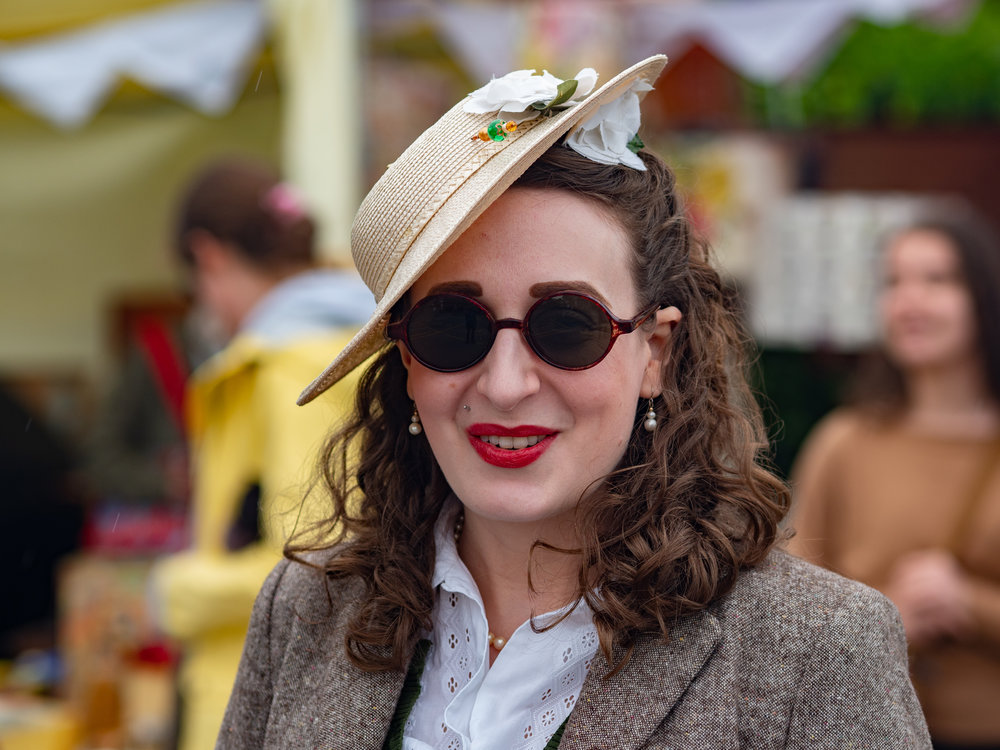
As it happened, Ken used the 75mm most of the day because it was indeed ideal for the occasion. Despite its lack of stabilisation — which is highly desirable at 150mm — the five-axis stabilisation in the camera body came to the rescue and helped eliminated camera shake. The 25mm Olympus Pro is also a great prime, although rather bulky, and makes an ideal walk-around optic for use with the EM-1 Mk.II.
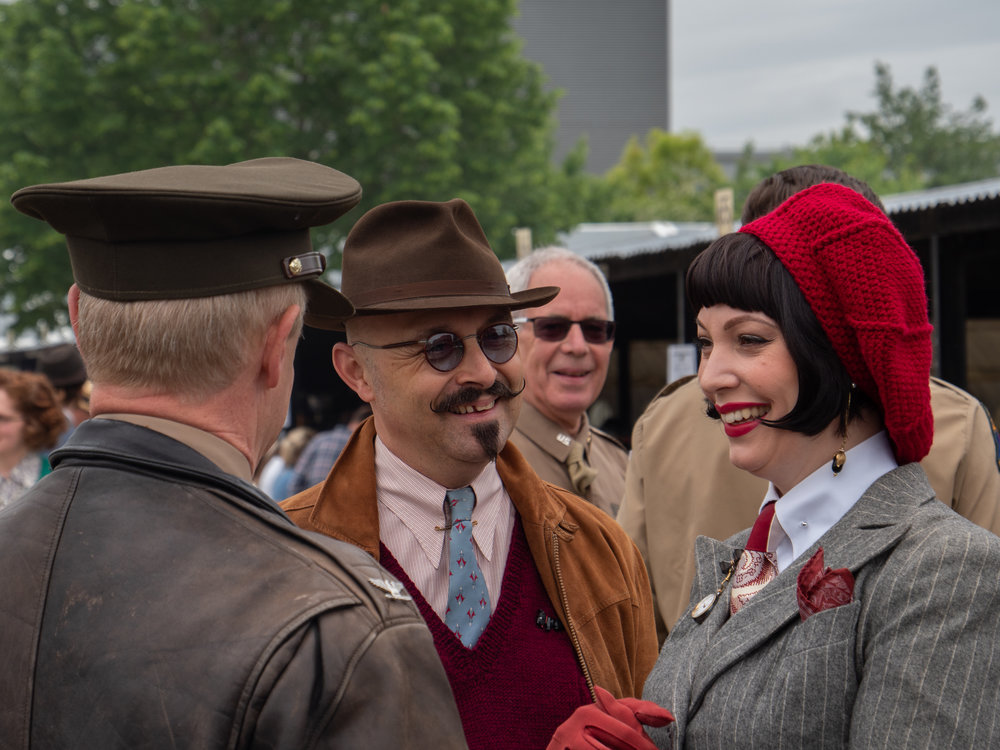
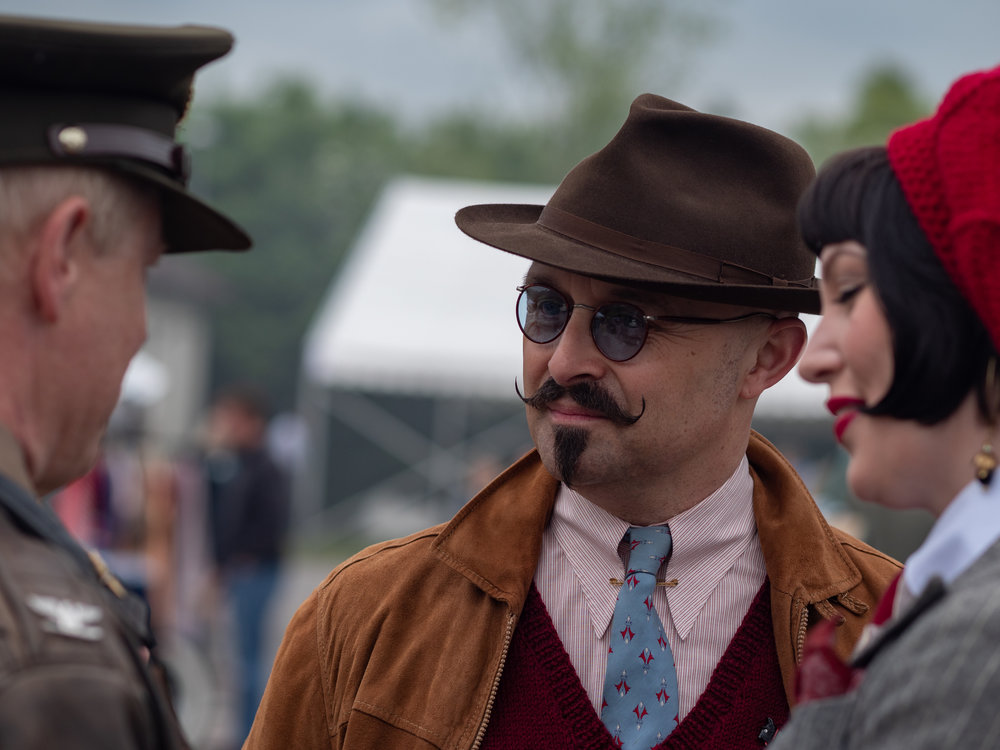
Despite the obvious attractions of having a zoom (on the Olympus PRO 12-40 and the Leica DG 12-60mm Vario Elmarit, we both had the same view — that the two primes were more useful overall in the specific circumstances of this event.
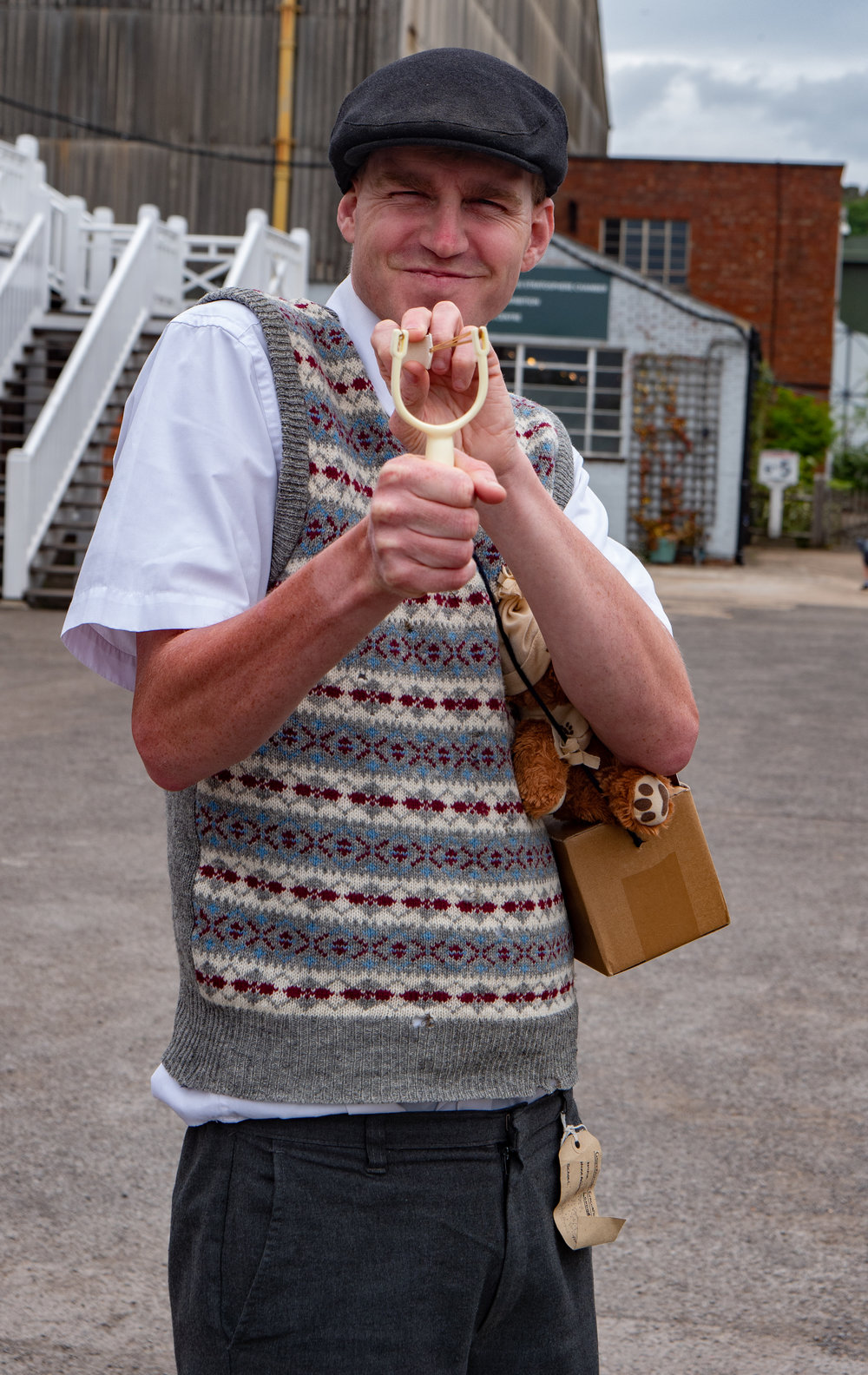
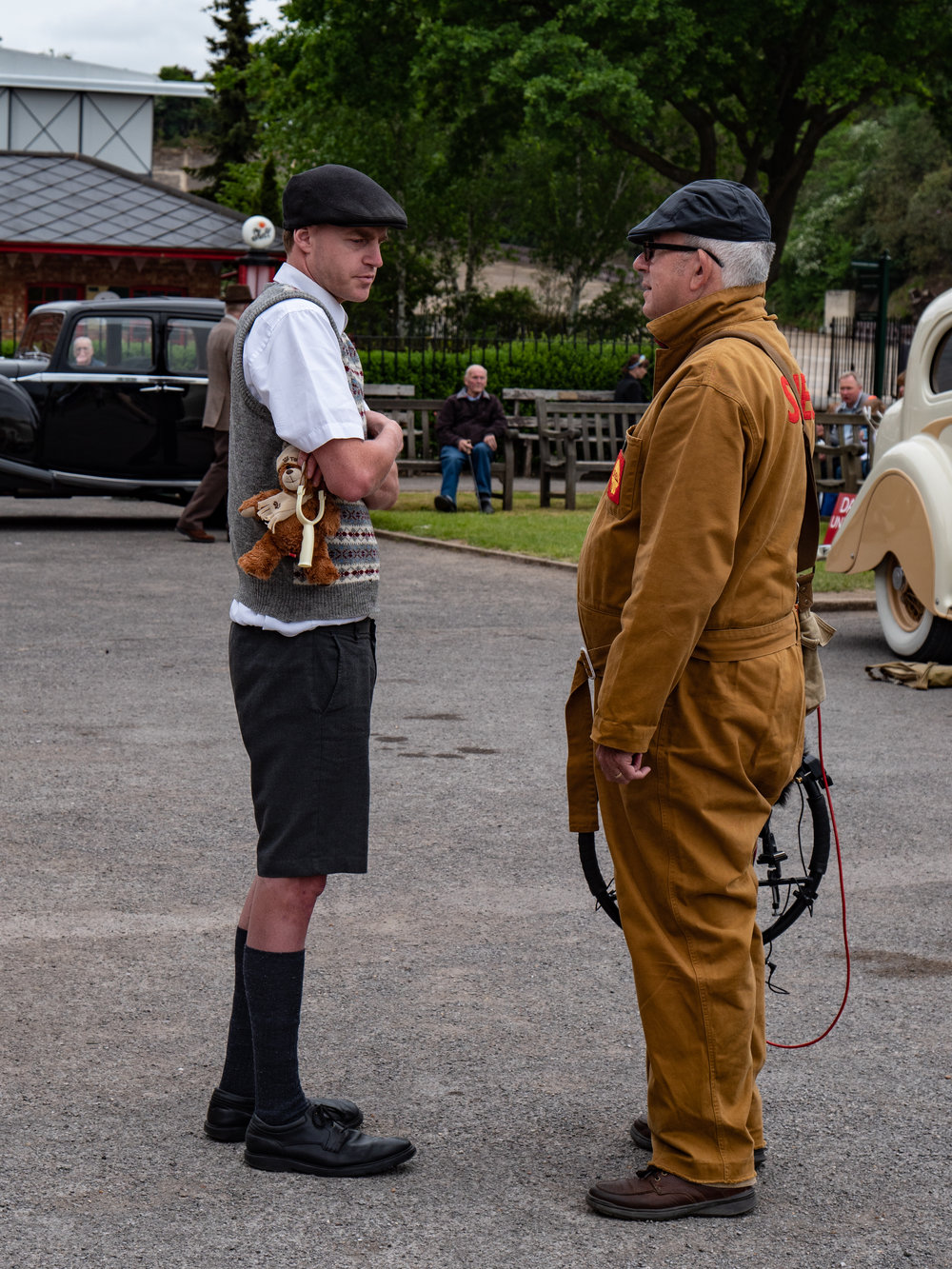
What is it about the 1940s that is so fascinating? It was a decade of high emotions and world change. Here in the UK it started with an epic an existential battle in the air. It ended on a hopeful note but Britain was still a country ravaged by the after effects of a bitter war. On occasion it was hard to believe that the Allies has won because life was still far less comfortable than it had been in 1939.
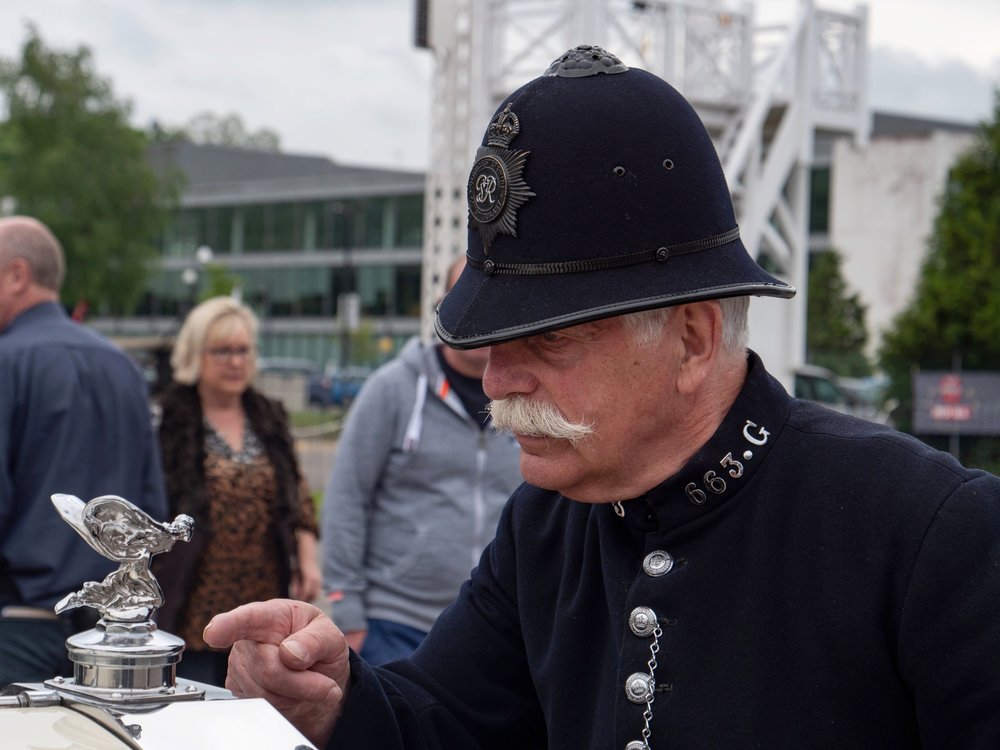
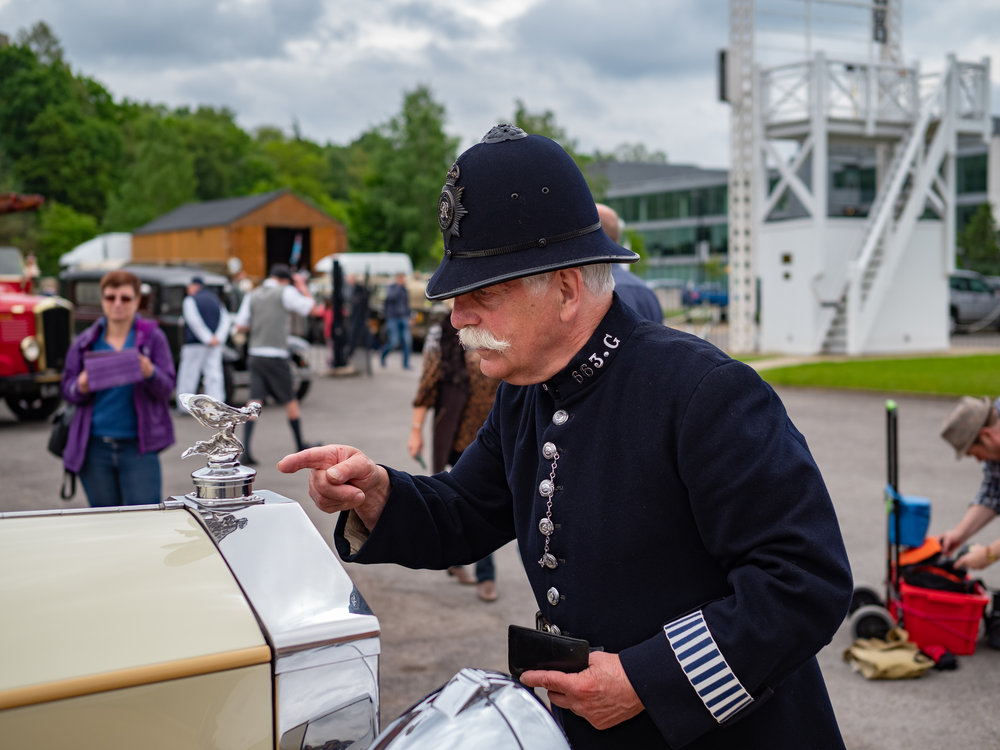
It was a time of make-do-and-mend, of rationing and state control over the basic necessities of life. Butter was in short supply and was an unbranded, national product. Margarine was what most people used and that, too, was unbranded, unadvertised and a rather unappetising state spread at that. Sugar came in blue bags, again unbranded. There was no point in competition when a few ounces a week were all that the Ministry of Food allowed. Almost everything was still rationed as 1950 dawned. Sweets and chocolates were not finally emancipated until 1954, much to the relief of kids everywhere.
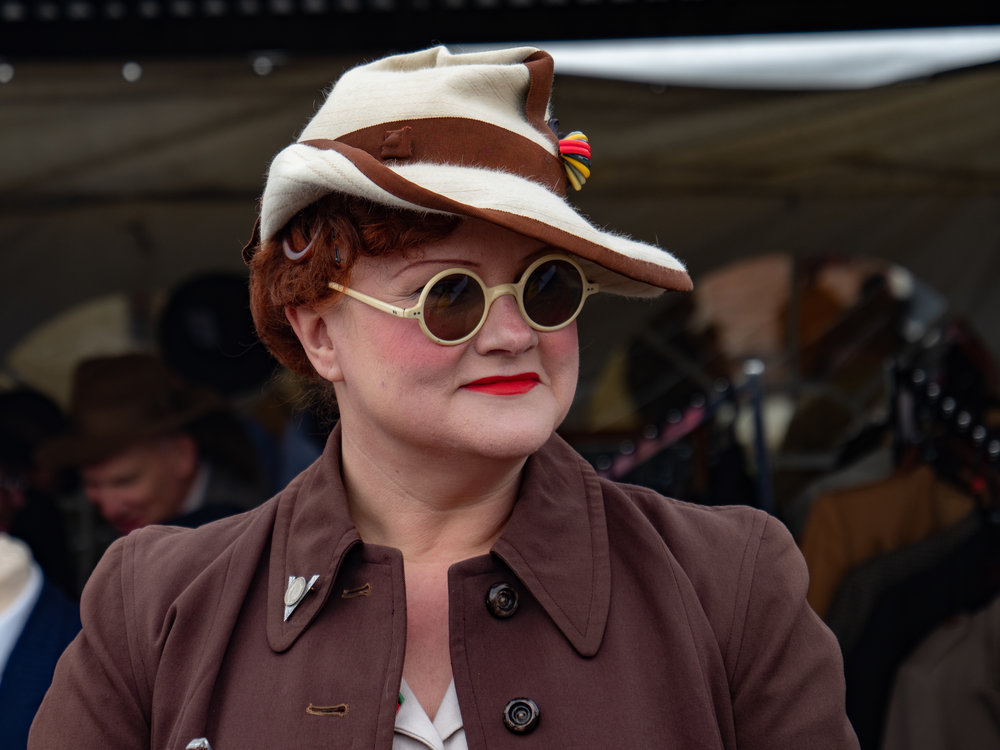
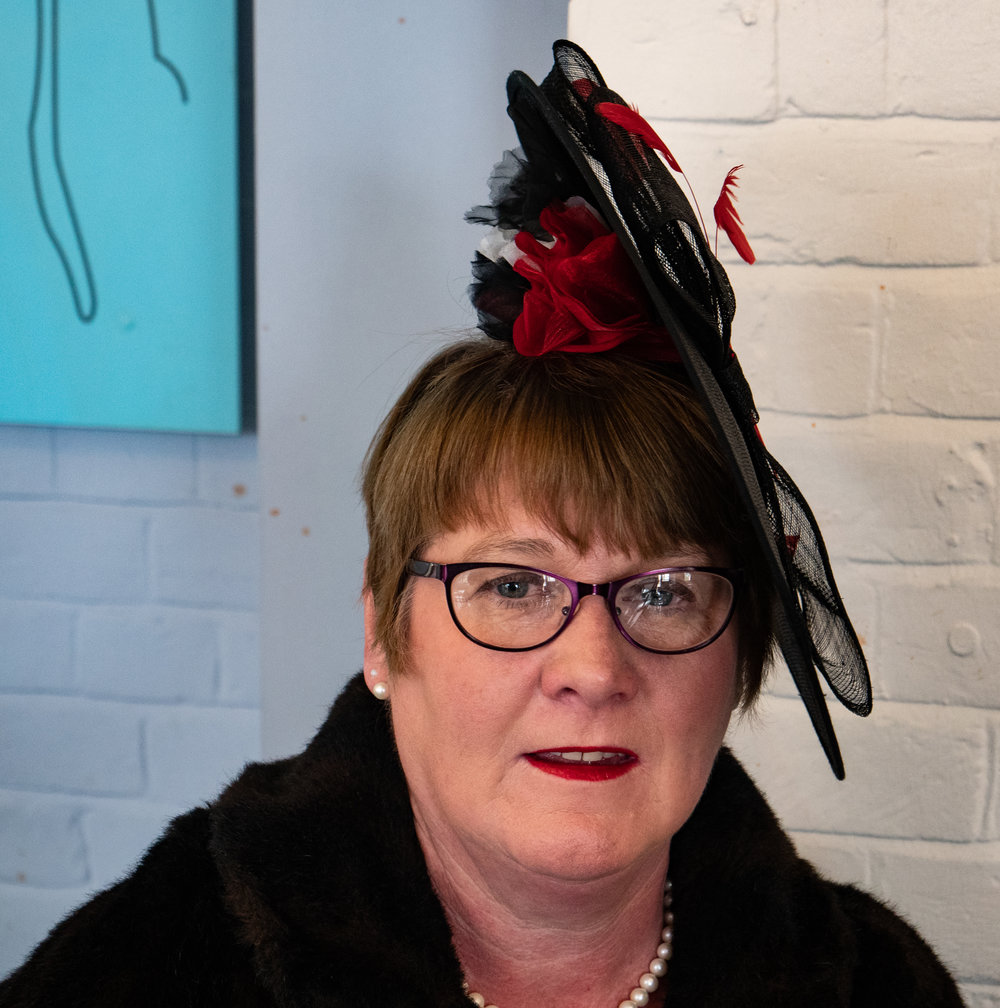
Few people had cars, streets that are now lined with vehicles were relatively broad thoroughfares as the original planners had ordained. And petrol was rationed, new cars were practically unobtainable unless you had a professional need, as a doctor perhaps. Permits were needed for everything, including the import of Leica cameras from the defeated enemy over in Hessen.
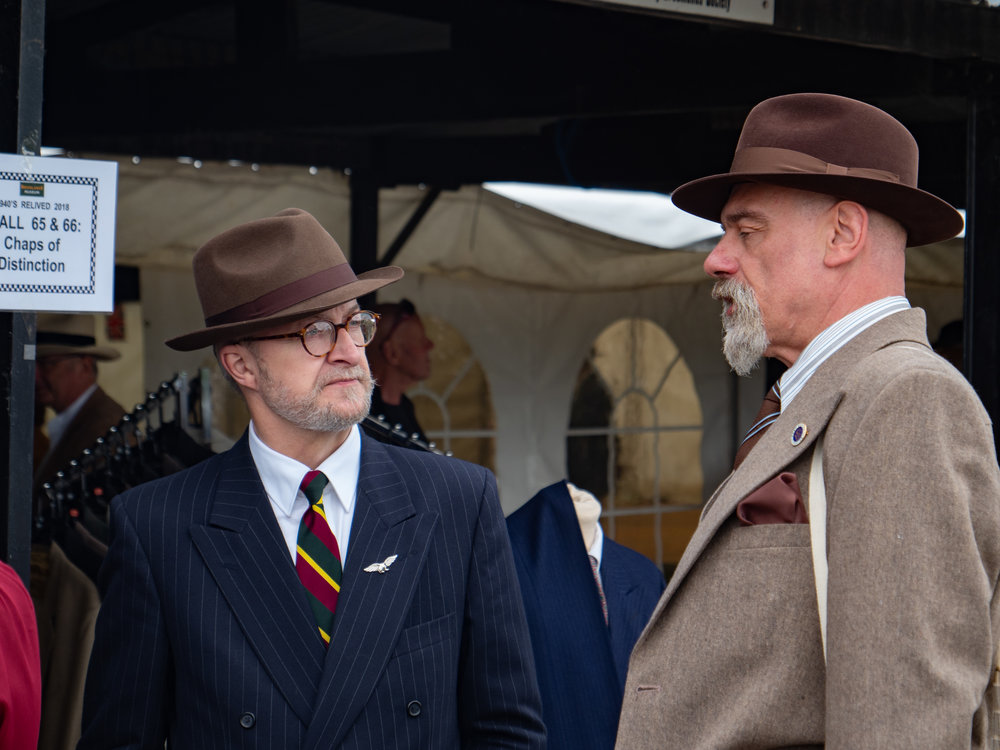
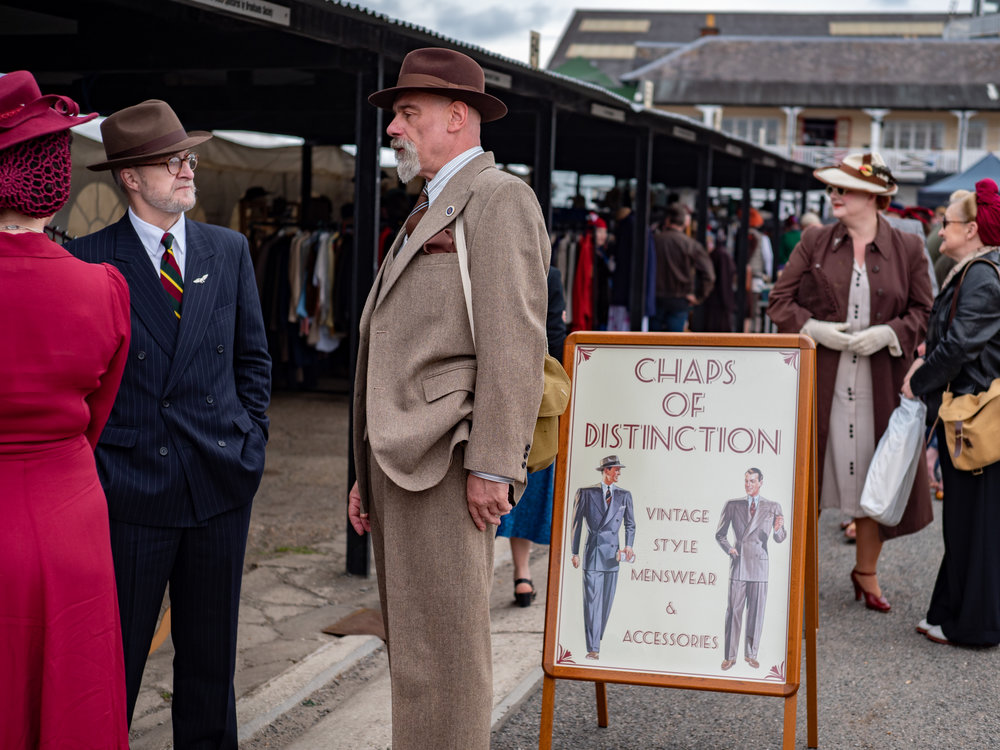
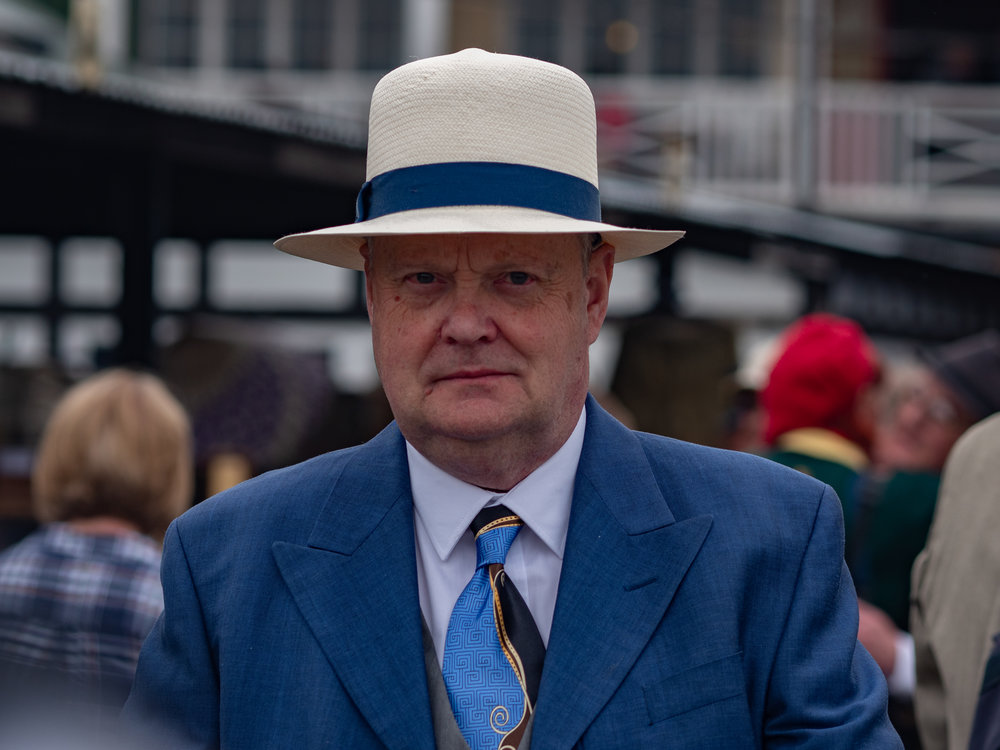
Houses were in short supply, especially in cities such as London where whole areas had been eliminated by enemy bombs. The post-war house building programme had hardly started by the end of the decade and it was accepted that most newly married couples would have to live with the in-laws for the foreseeable future.
It wasn’t until the early fifties that housing began to catch up with demand. In the meantime, the “prefab” became a symbol of the late forties. These ready-made bungalows made of metal were winched into place all over the country to provide temporary accommodation. They were surprisingly popular, a big advance over the pre-war slum terraces in most cities, and some are still in use.
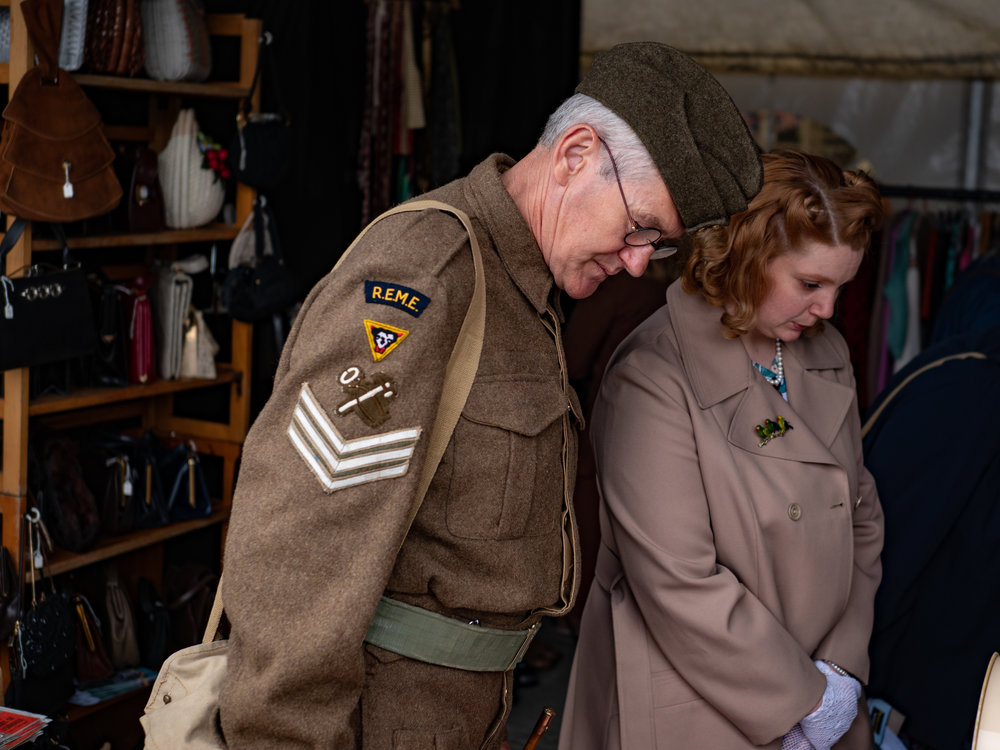
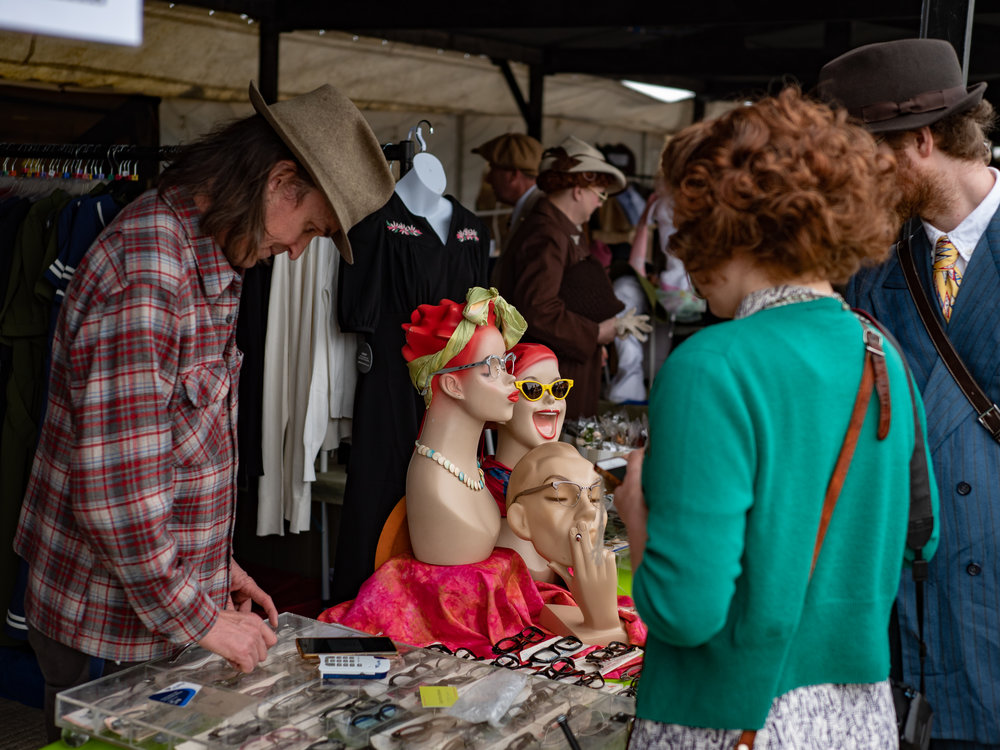
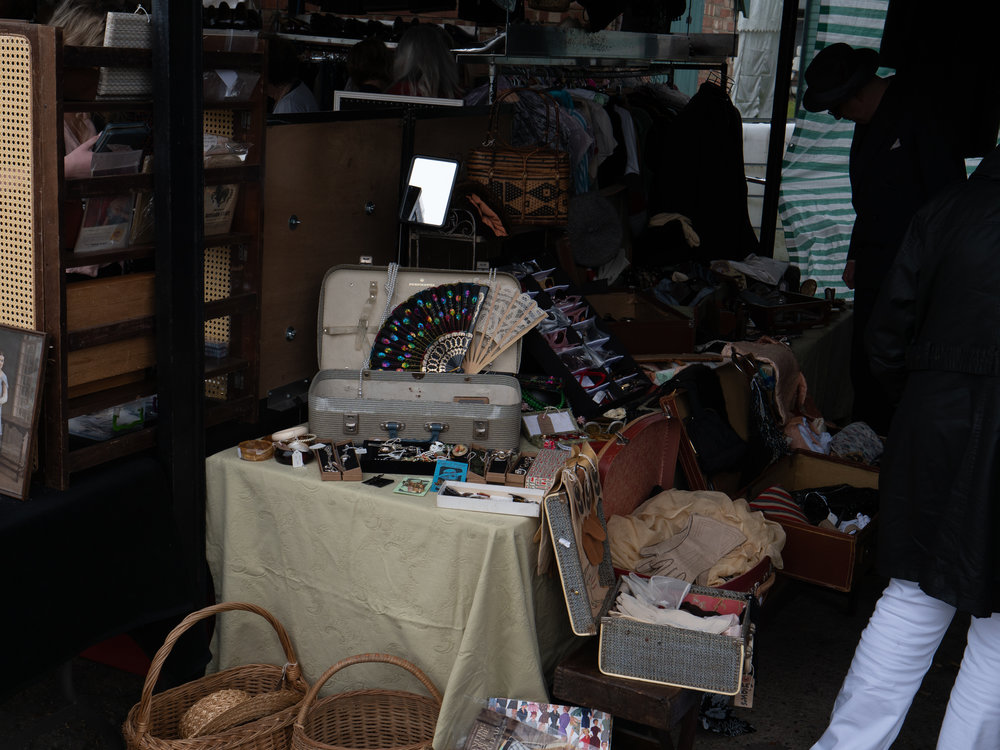
Against this background of austerity and the rather dismal backdrop of dilapidated infrastructure, multiple fenced-off bomb sites and coal-fire-fuelled fog at its worst, the forties was a colourful era when it comes to clothing, especially female attire. Men’s dress was still rather drab and conservative, with wide-bottomed “demob” suits, ubiquitous and virtually compulsory headgear — from flat caps to trilbies and bowlers. For fully half the decade most able-bodied men had spent their time in uniform and this, also, represents a major hallmark of the 1940s. The war and its aftermath defined the decade.
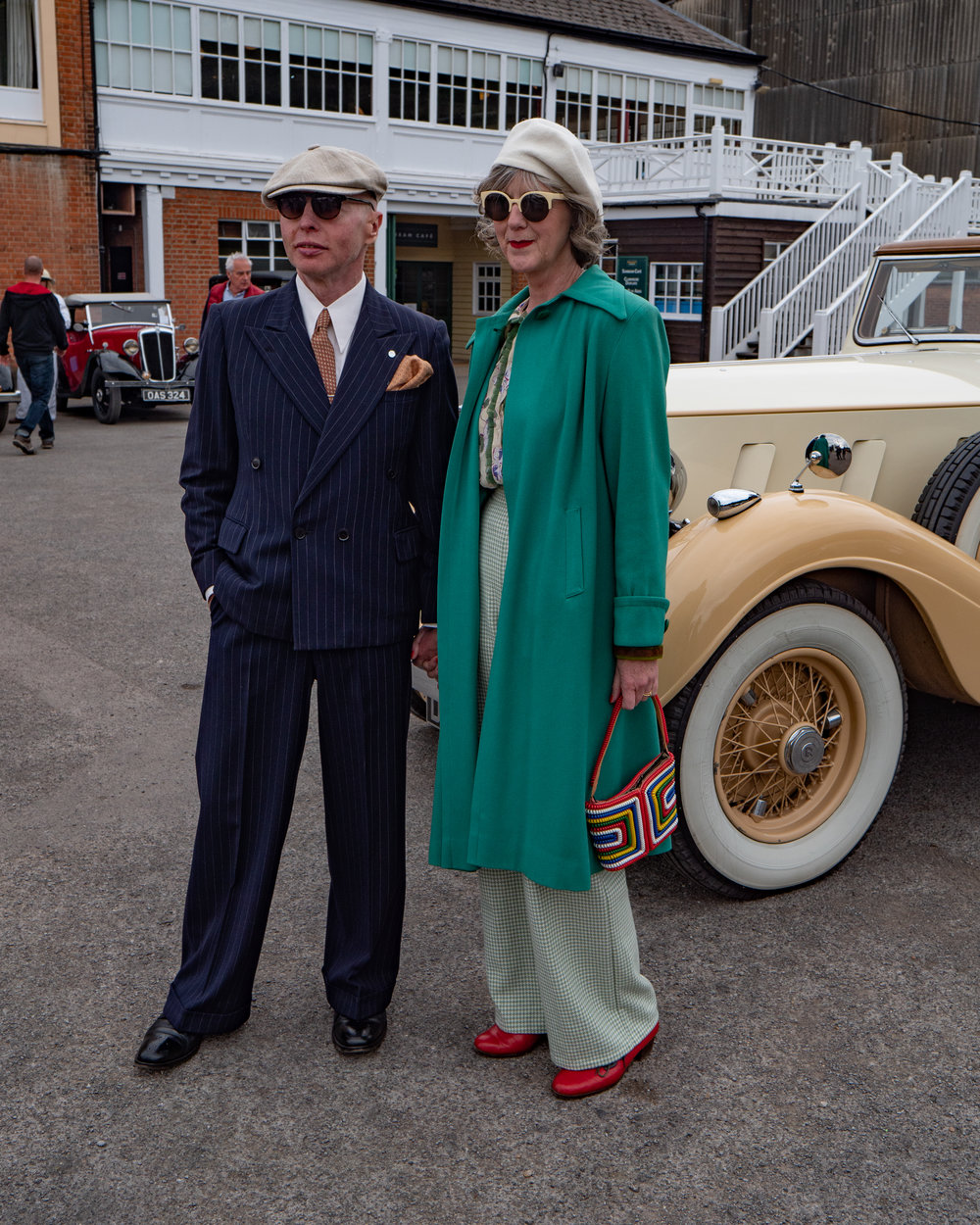
It is perhaps no wonder that there is such interest in 1940s revival days. Some of the dramatis personae at Saturday’s event visit similar gatherings which take place all over the country. They were thronging the vintage clothing market where you could buy a complete outfit, either secondhand or bespoke at tailors such as Chaps of Distinction and Chester Cordite. There was also a roaring trade in traditional wicker shopping baskets, jars of vintage jam and packets of Bird’s Custard to make up the daily shop.
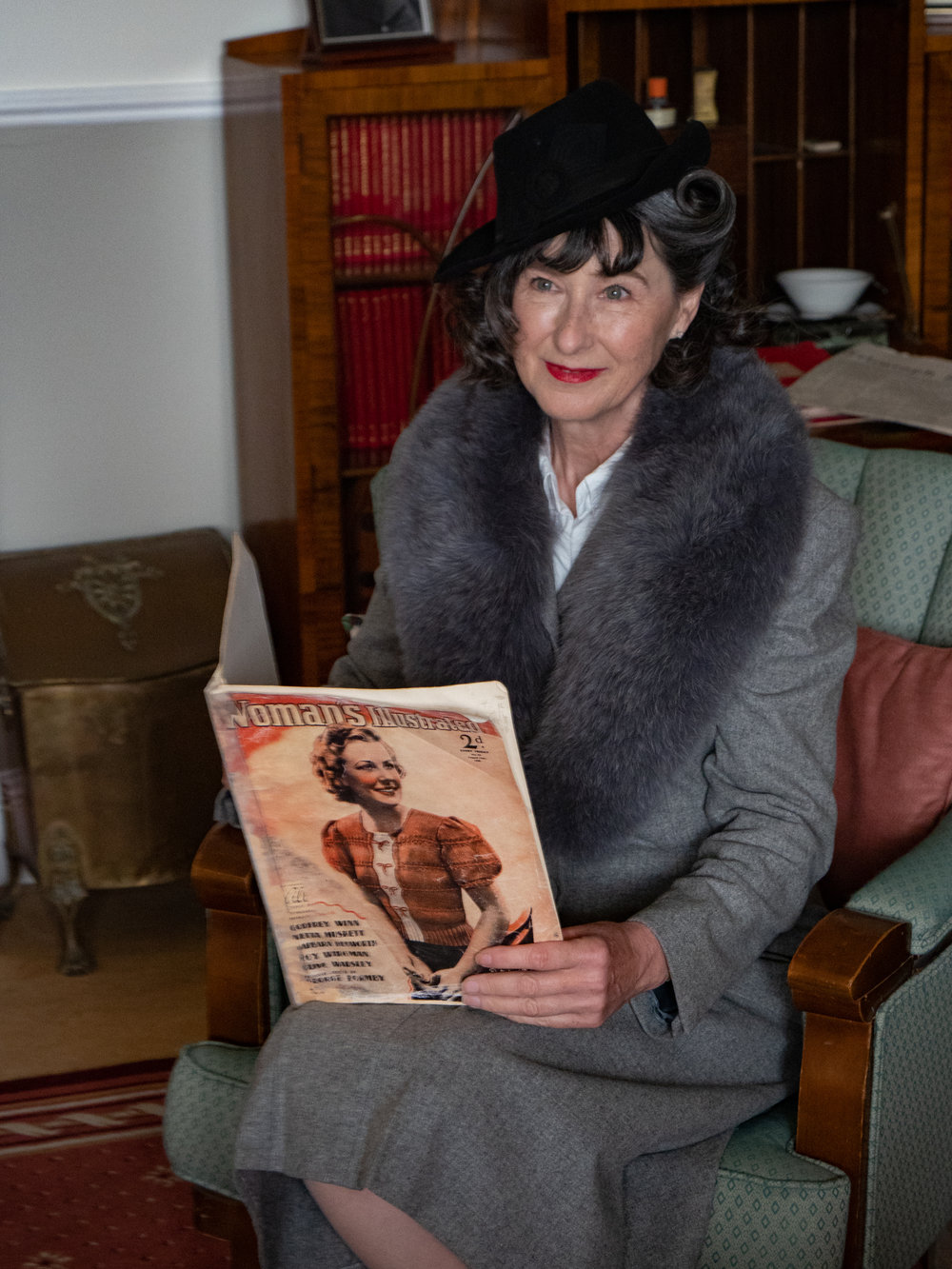
Ken wondered who several women were carrying around what he assumed were hampers full of food. An excusable mistake. I had to explain that women (almost exclusively) would have a wicker basket over their arm when out shopping — usually daily in the absence of fridges and the omnipresence of rationing. In those days there were no supermarkets.
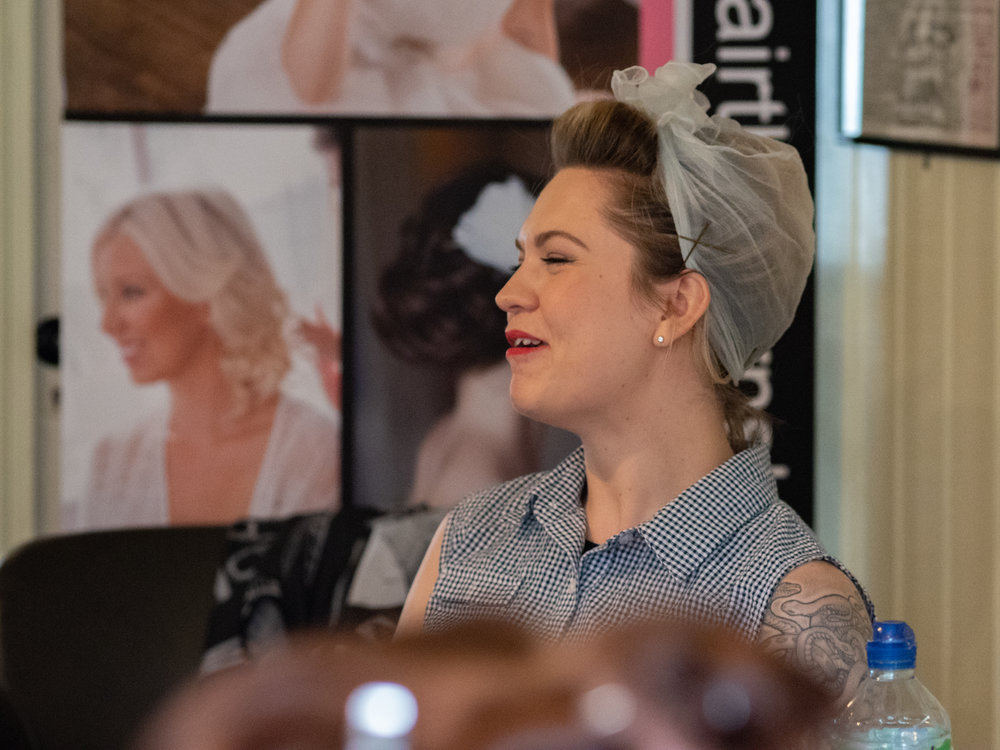
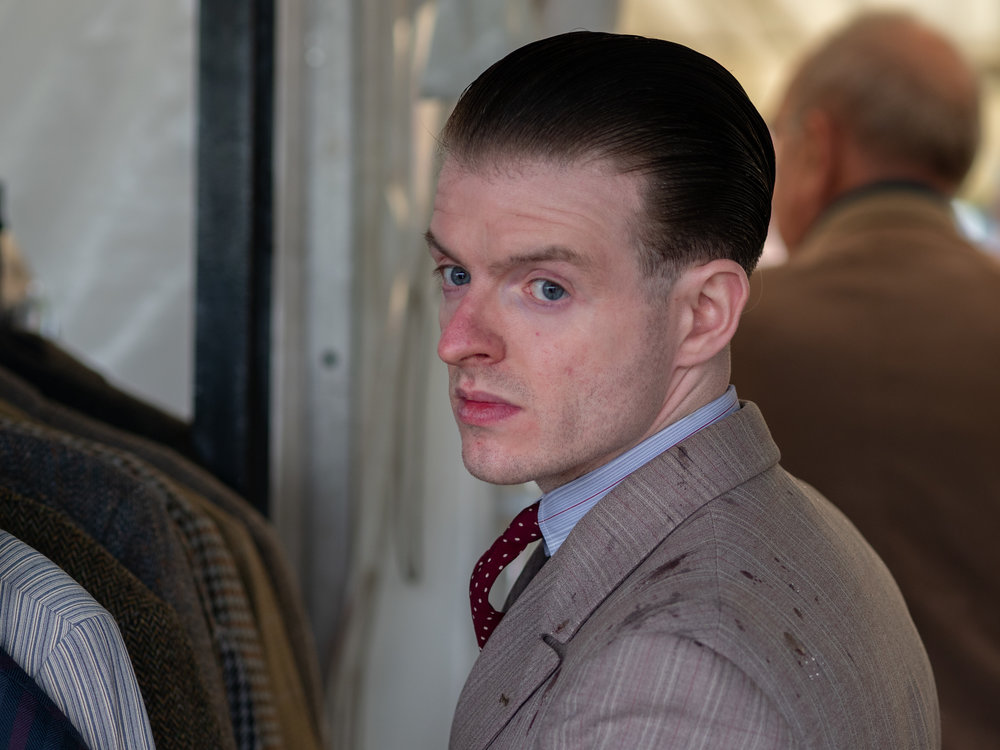
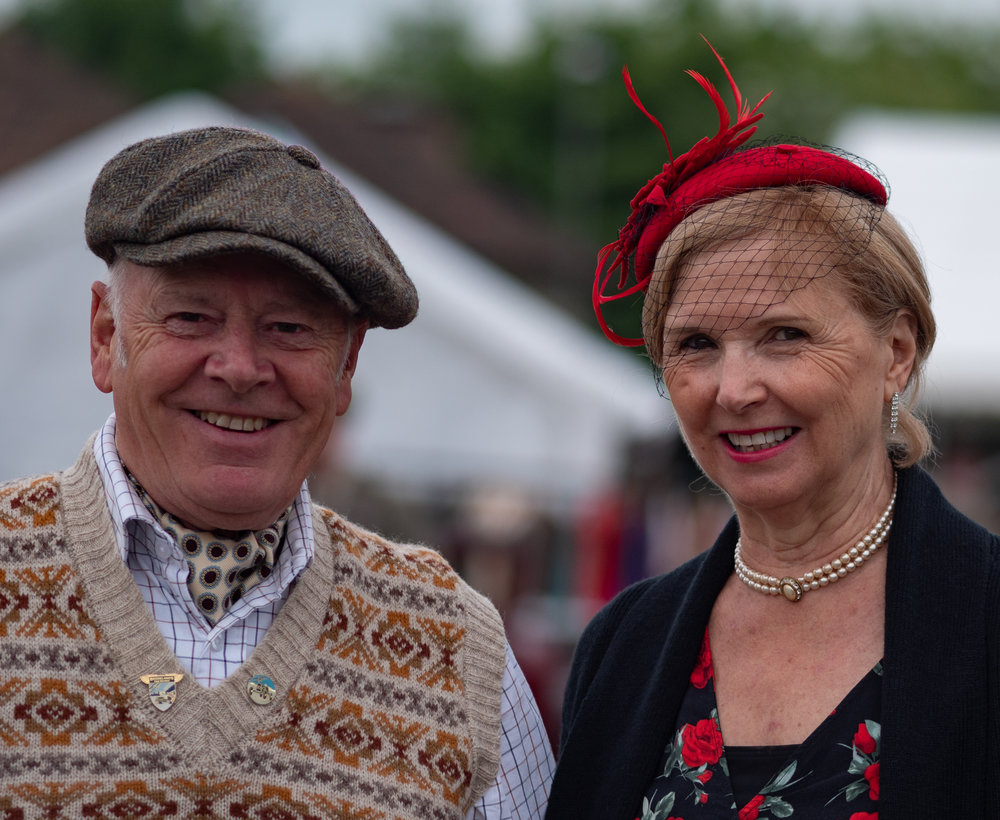
Grocery shops were all similar to that owned by my grandfather — barrels of this and that, large boxes of loose biscuits and raisins and no sign of plastic of cellophane wrapping. Sugar was ladled into blue 1lb bags, butter was cut from the block, bacon sliced on a big and very dangerous-looking machine — at least to the eyes of a very young boy.
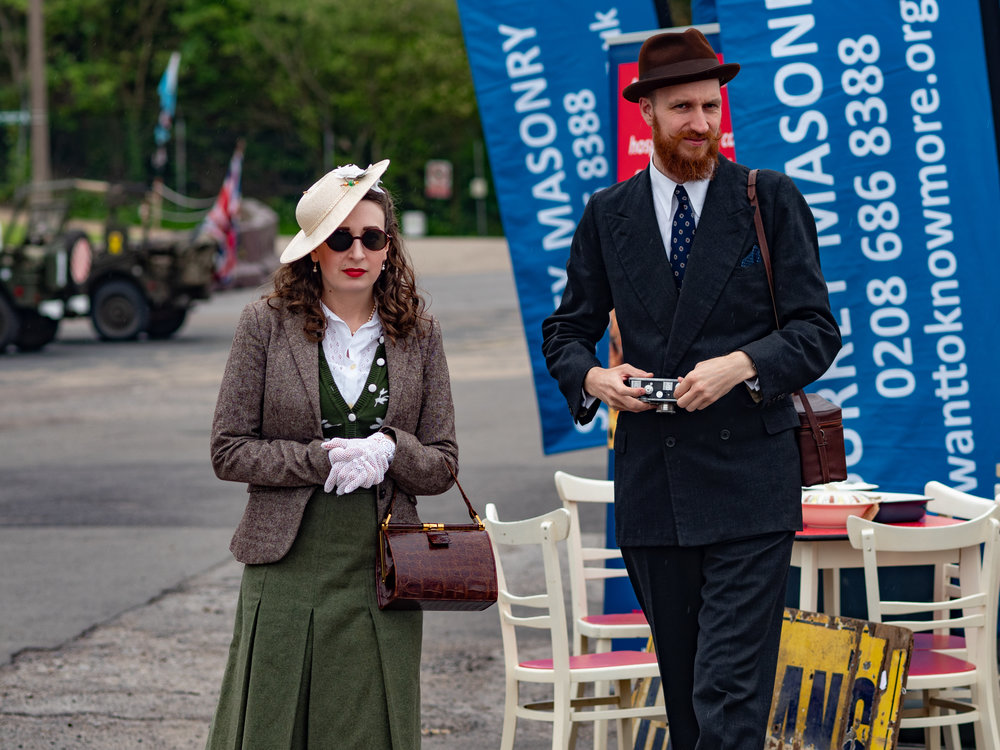
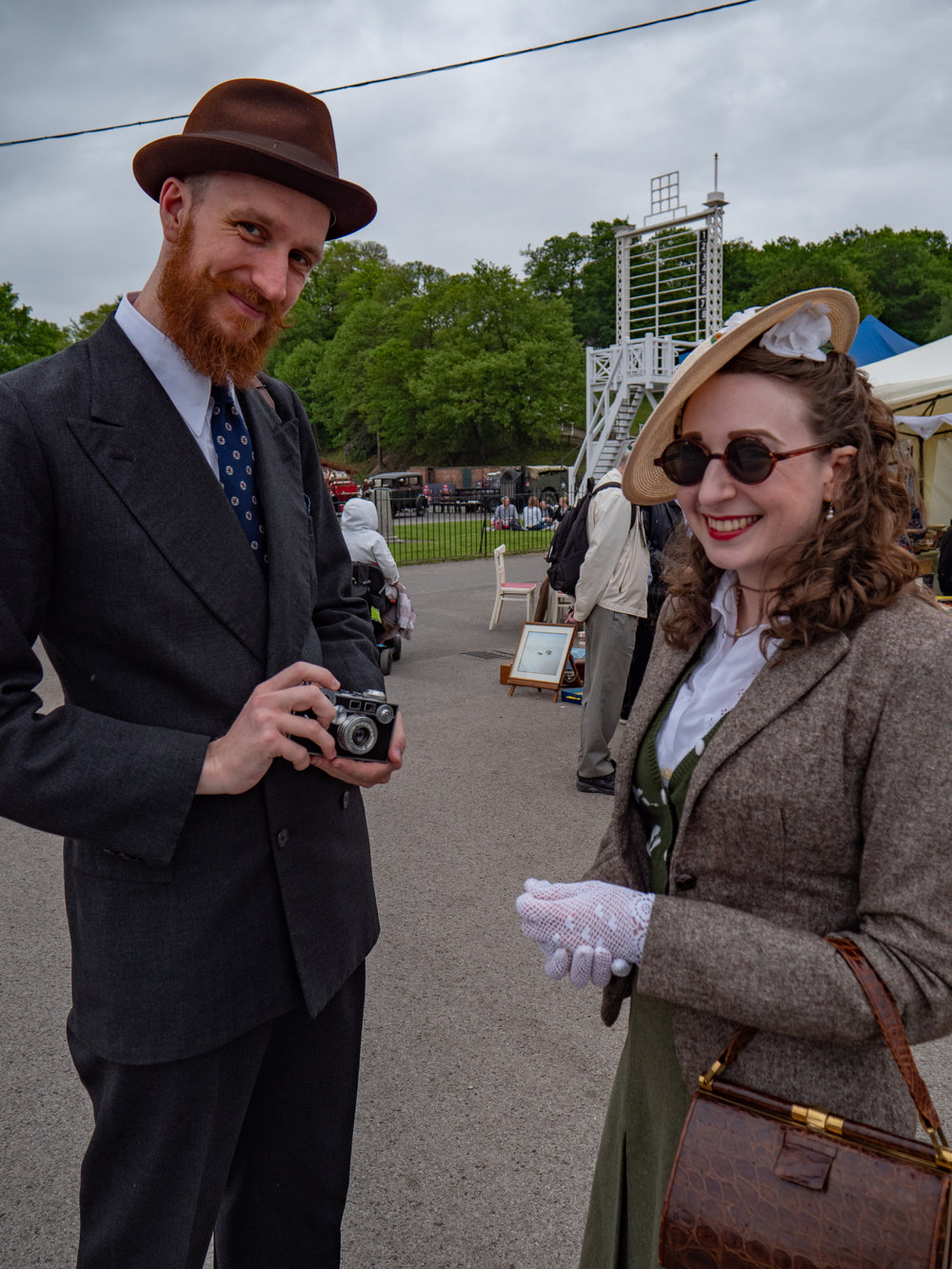
Customers would queue patiently (everyone was used to queuing after the war) for the privilege of sitting on a chair in front of the counter while my grandfather fetched everything, item by item. Then he would tot up the bill with an indelible pencil on a sheet of greaseproof paper. The dubious convenience of packaged everything and groaning supermarket shelves was unknown. One byproduct of all this fresh stuff wrapped in greaseproof paper or packed in paper bags was that there was no need for recycling. Everything, including ashes from the fire, went into a single bin.
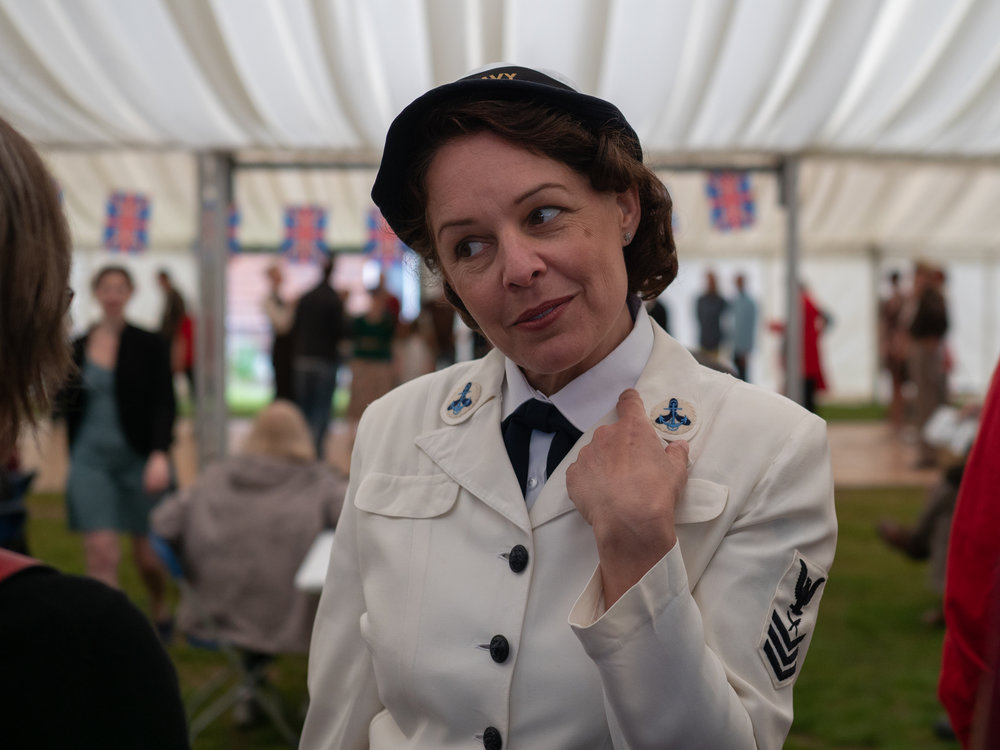
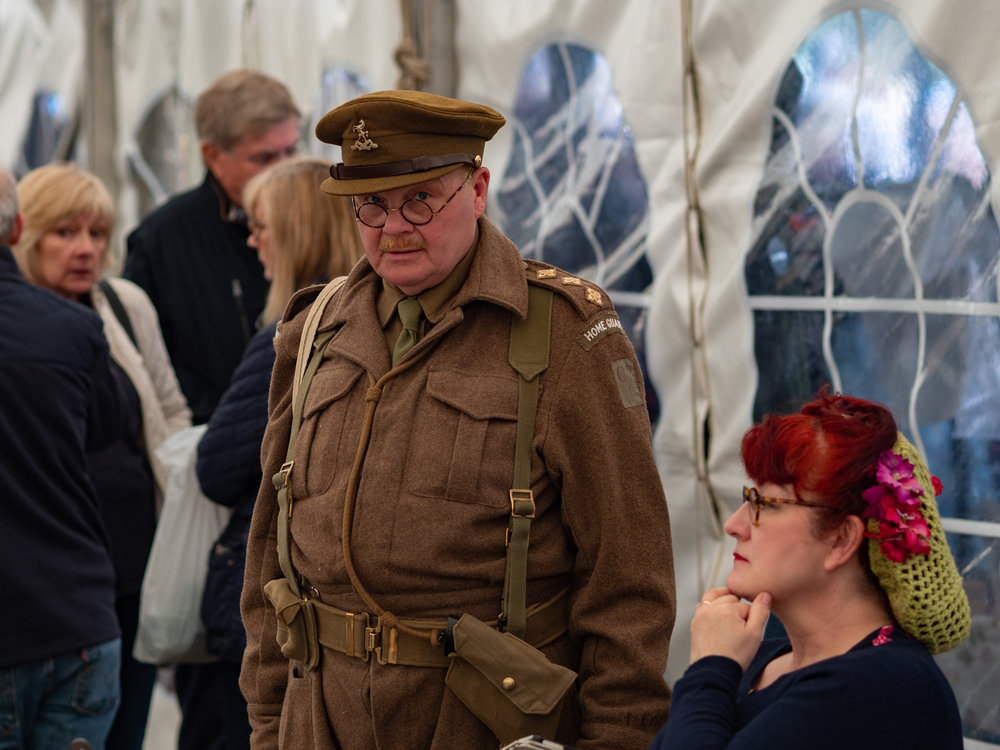
For younger people, the 40s is ancient history, just as remote as Queen Victoria or the industrial revolution. Fortunately, the 1940s Revival and other similar events bring us a very sobering reminder of what life was like in Britain during and immediately after the war. For those who today whinge about austerity, all I can say is that they don’t know the meaning of the word.
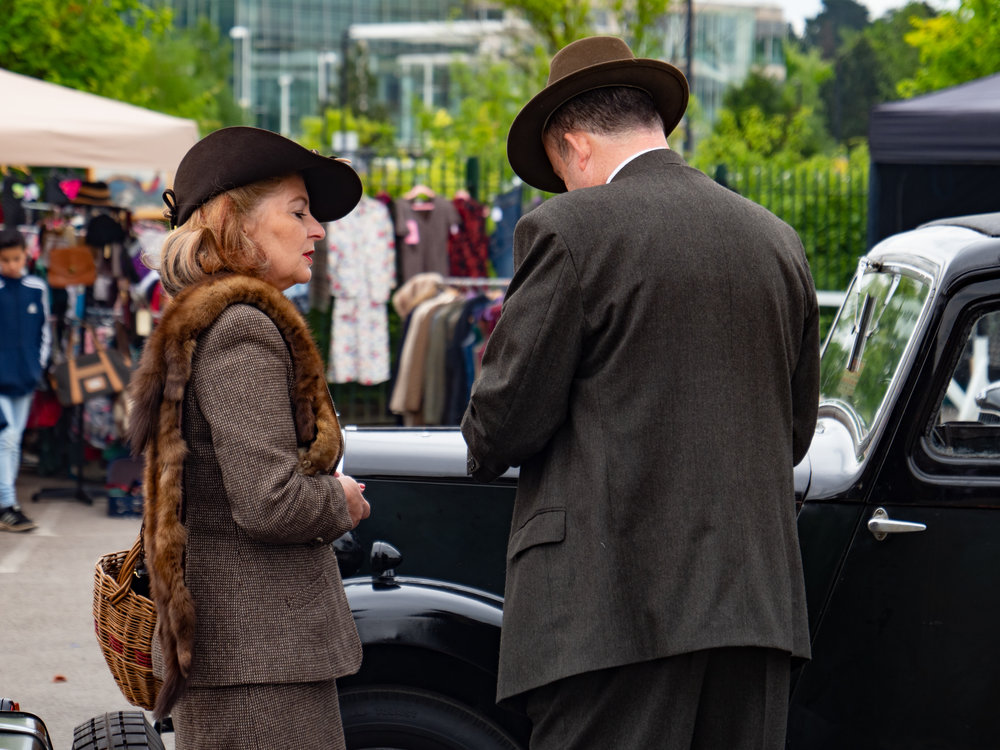
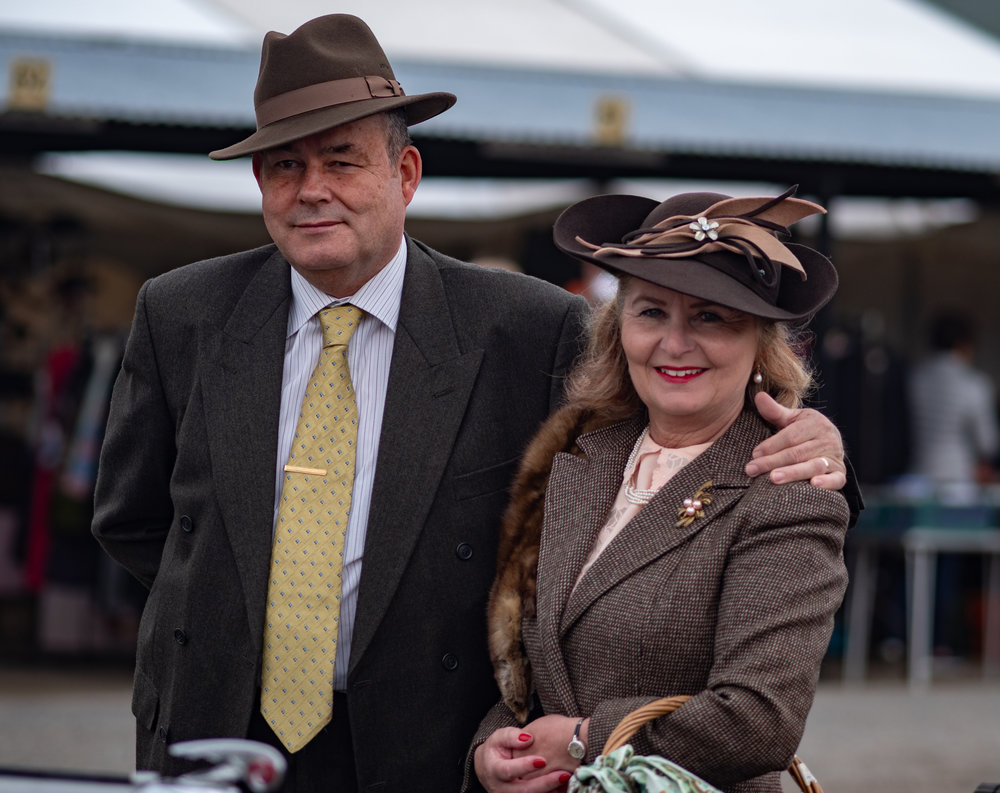
At the dance
Throughout the day the large dance marquee was doing a roaring business, with big band and help to learn the Lindy Hop, line dancing and other skills. Ken roamed free with the Olympus and that stunning 75mm f/1.8 Olympus lens and bagged some of the day’s best pictures.
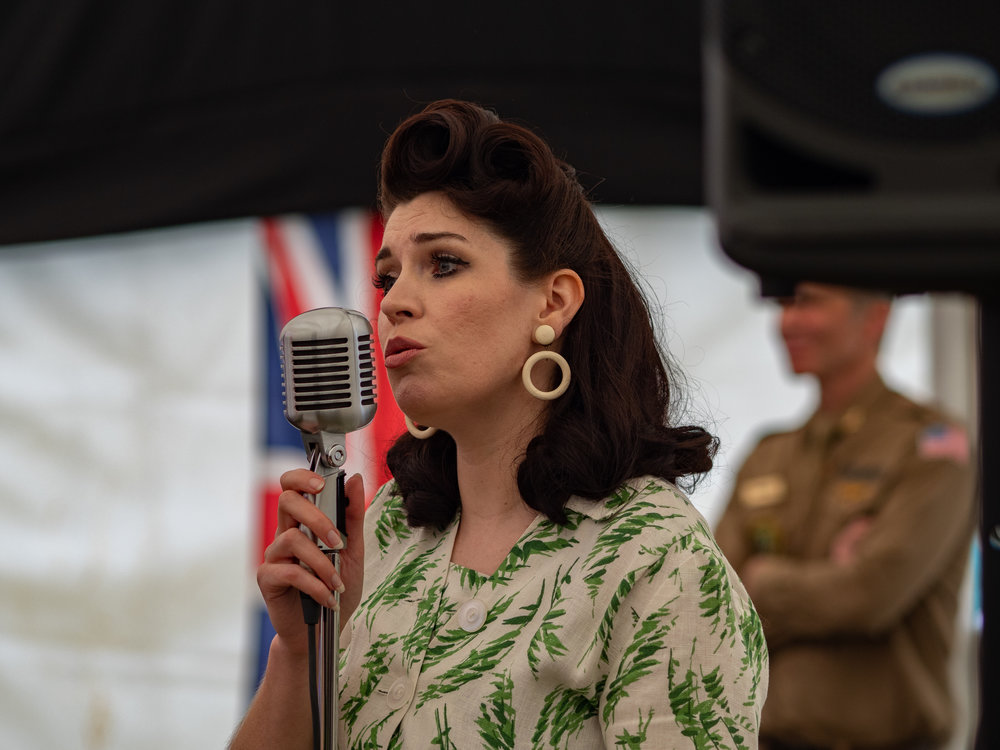
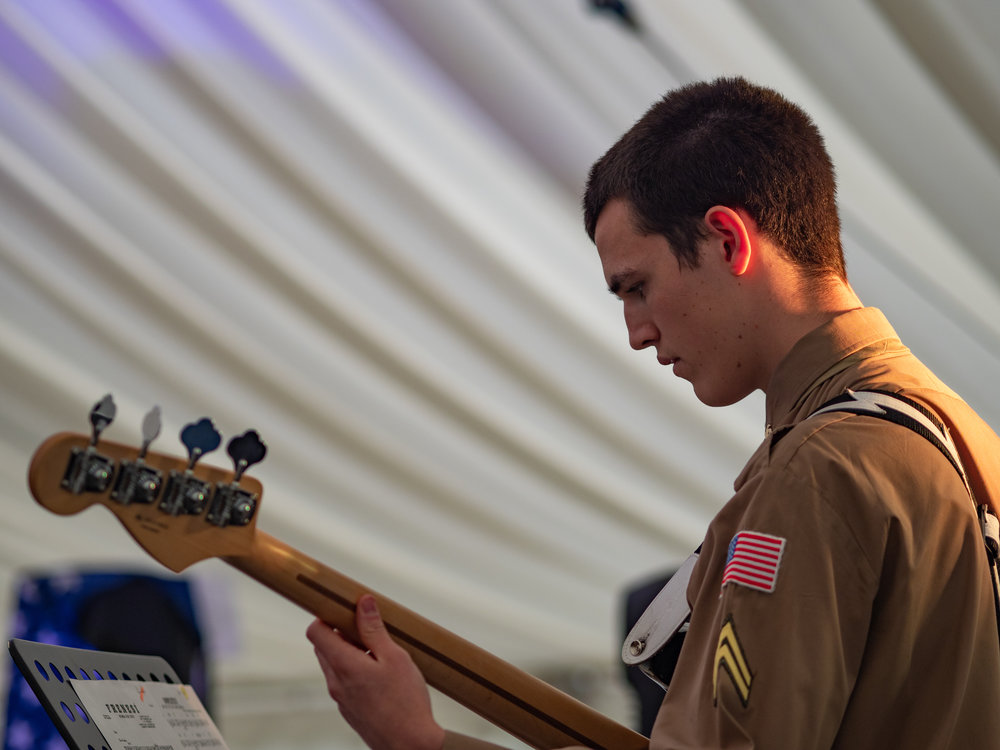
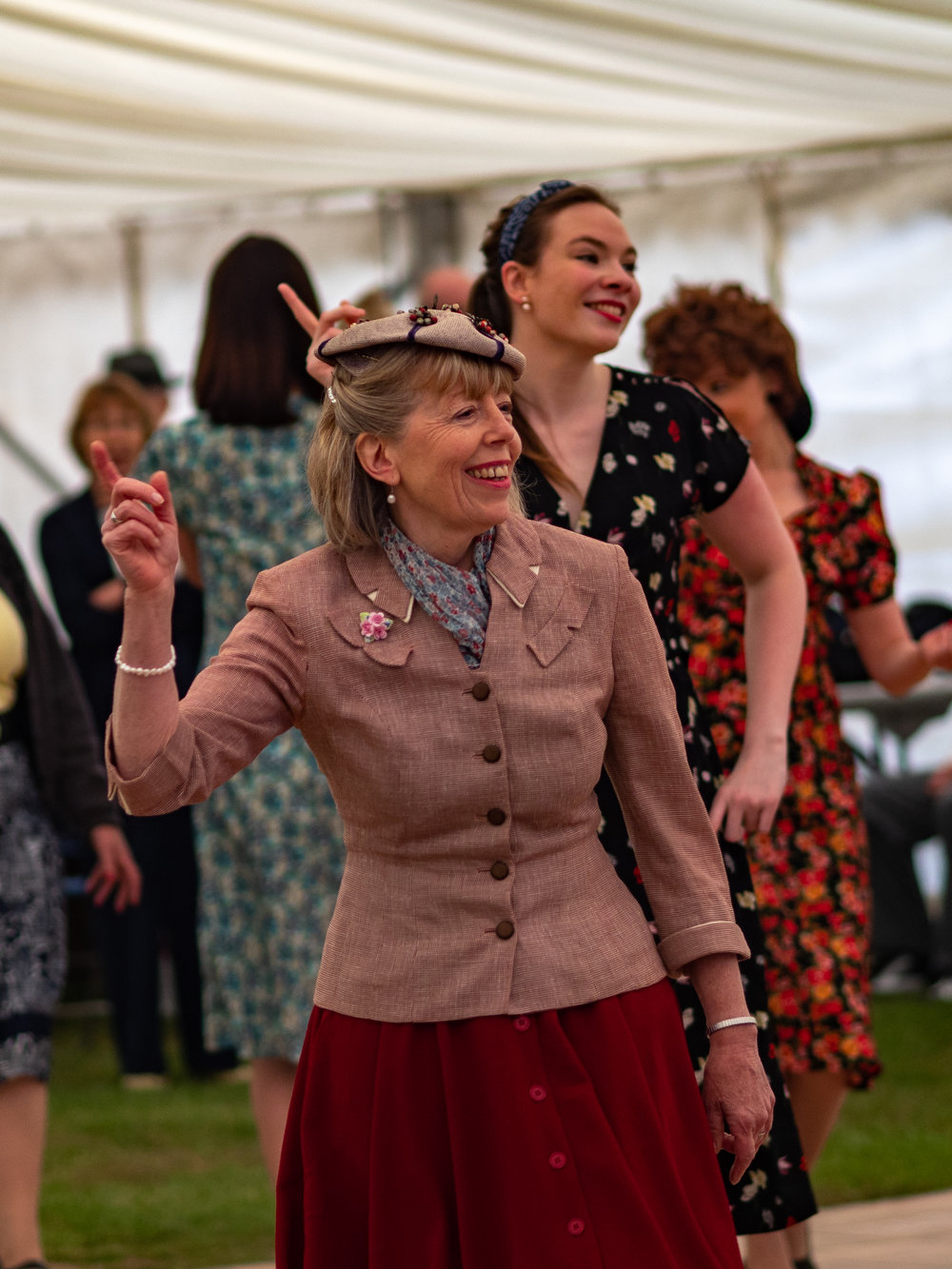
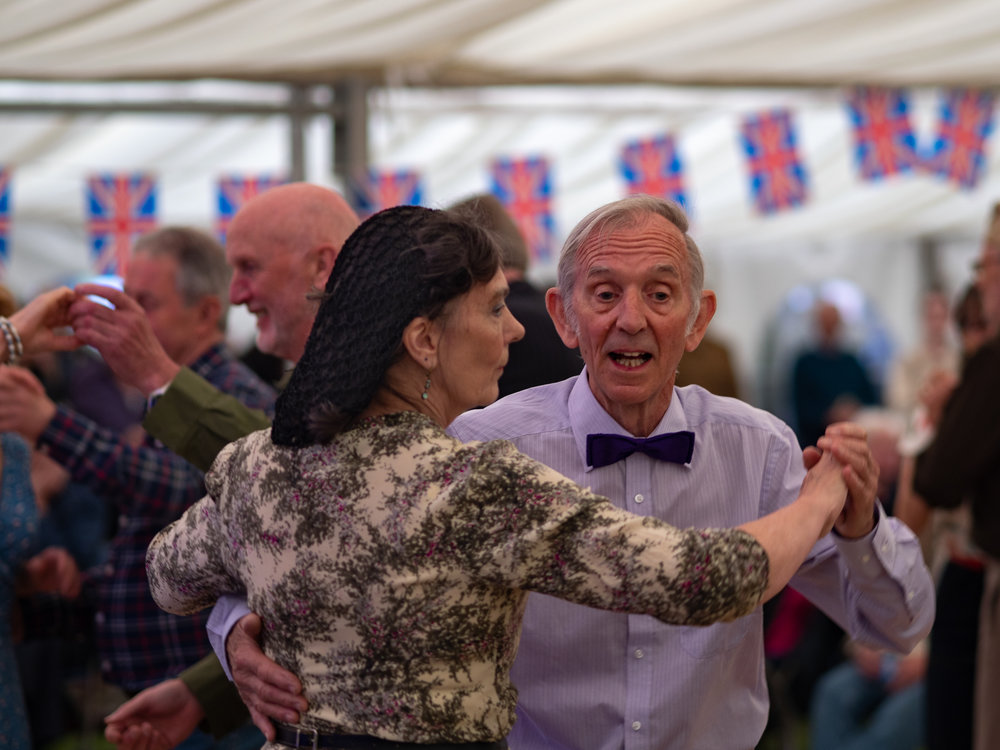
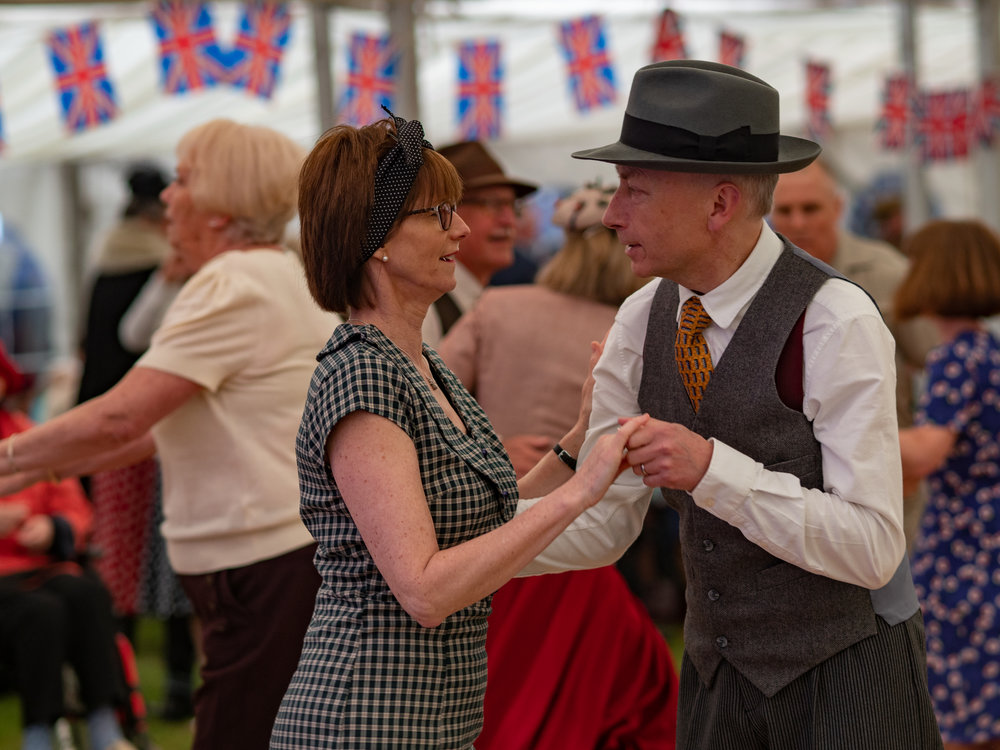
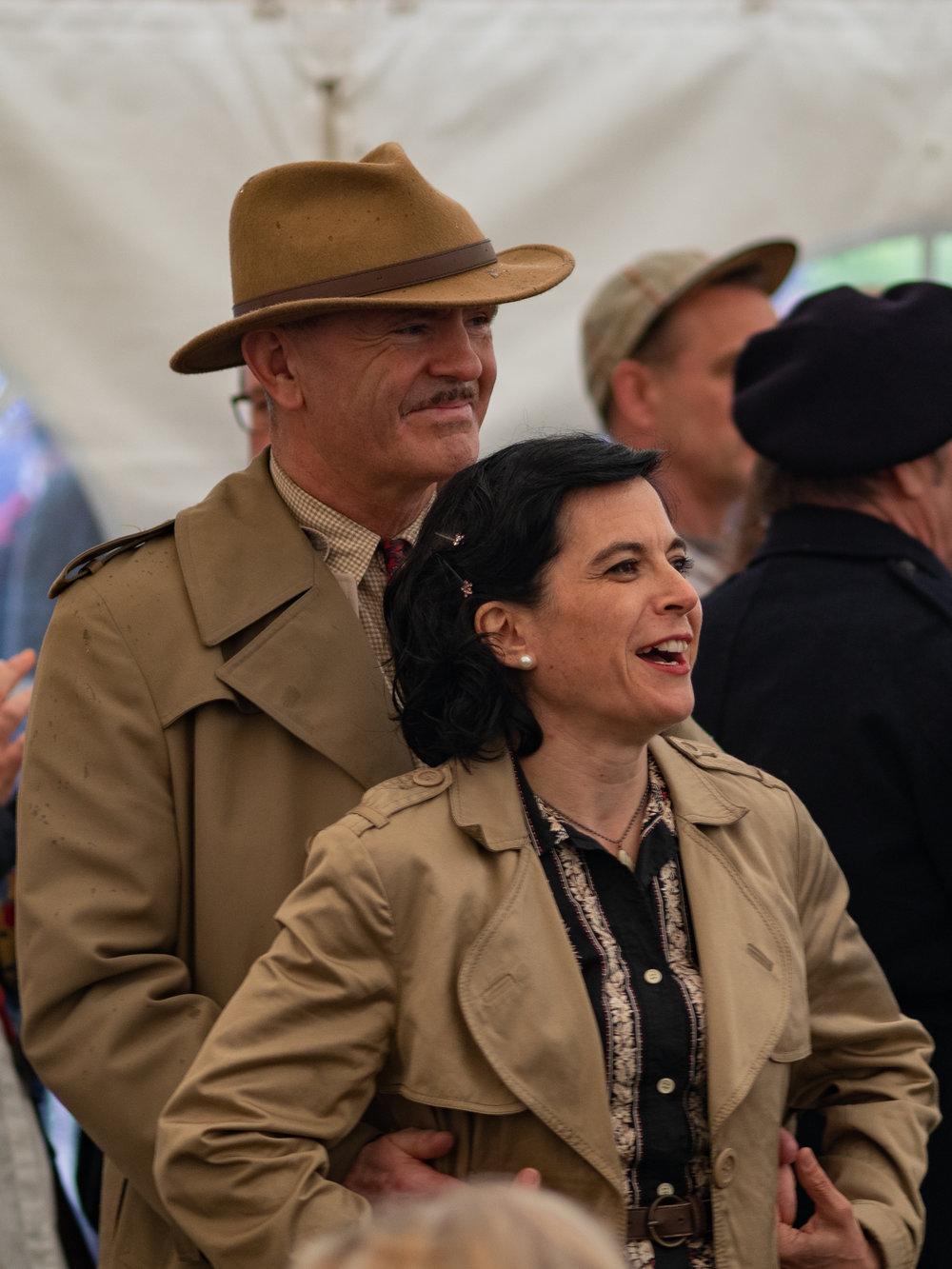
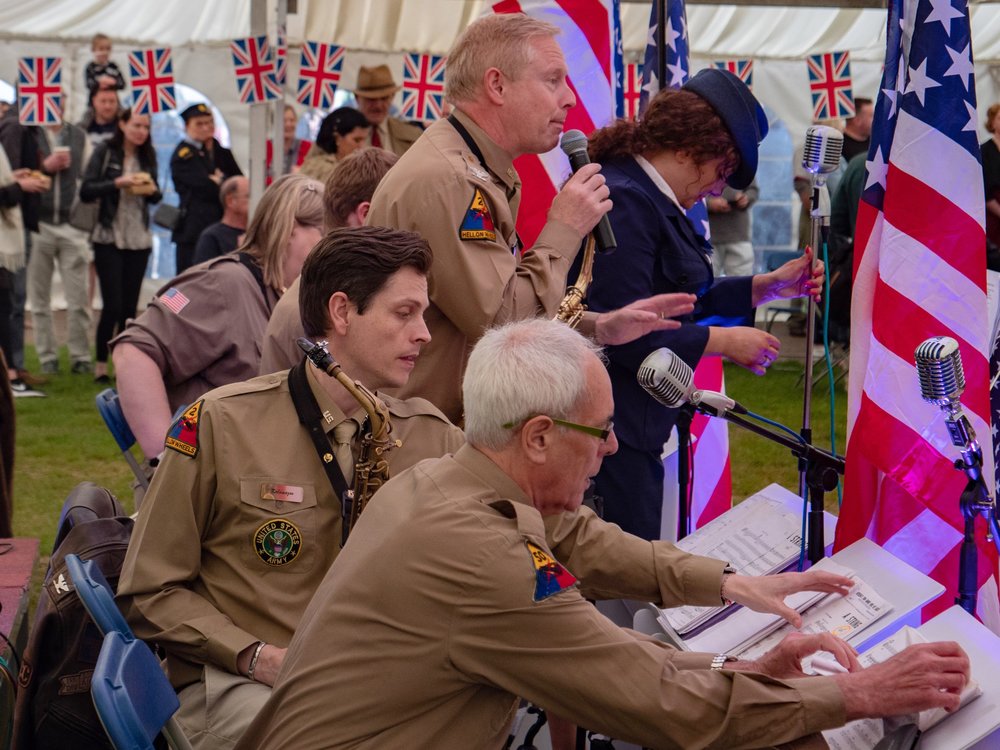
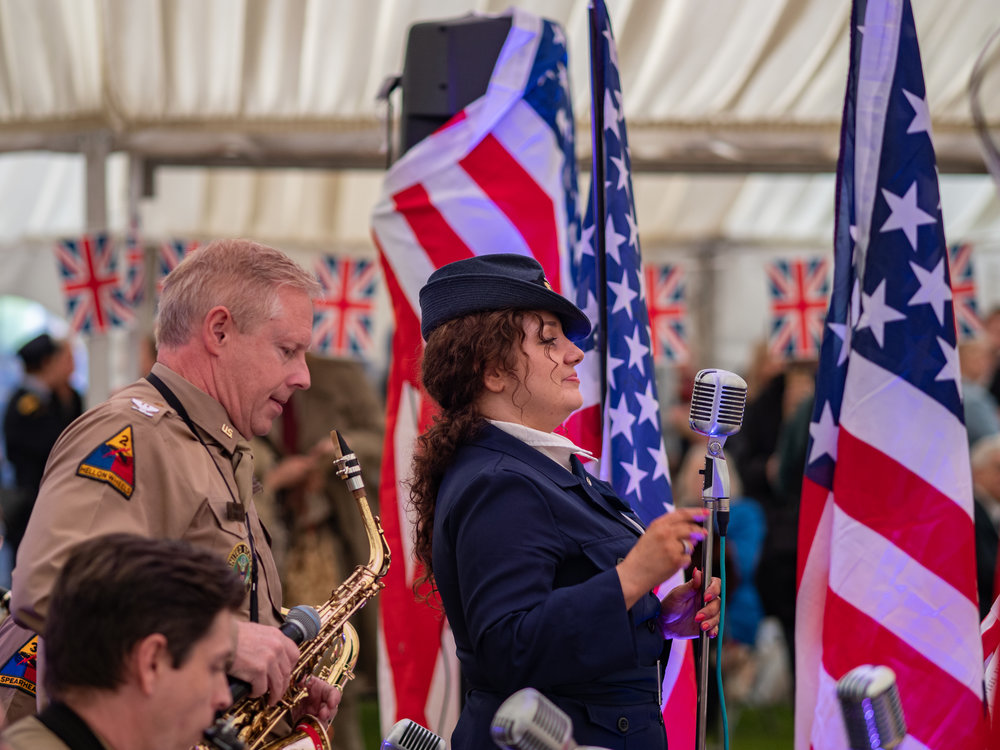
Tailpieces
The day produced a bumper crop of images and they show off 1940s style in all its glory. Our dilemma was whether to go with colour or convert everything into monochrome, something which could have given a more accurate if a less vivid impression of the decade. Although we’ve used colour throughout, many of these shots will work as well, if not better, in black and white and we will demonstrate this in a future article.
Both the Olympus OM-D E-M1 Mark II (full marks to Olympus for its snappy naming convention) and the Panasonic Lumix G9 performed extremely well. In the past, I have covered this event with Leica Ms or the SL but the micro four-thirds cameras and lenses proved to be light and convenient and the results tell their own story. Of the lenses, surprisingly, the 75mm Olympus f/1.8, with its 150mm effective reach, proved to be the star of the day. It was particularly useful in the dance scenes and Ken gave it his best.
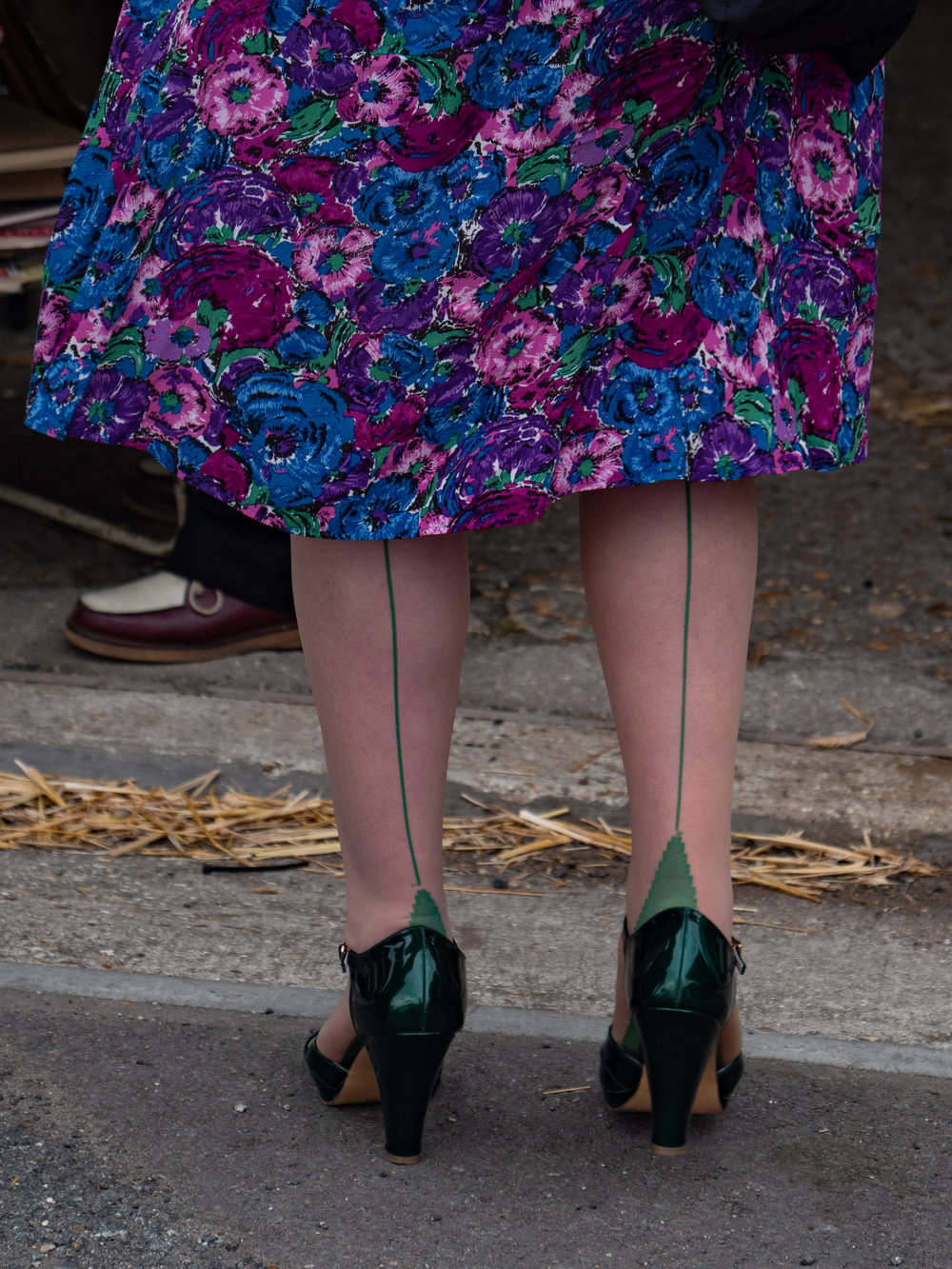
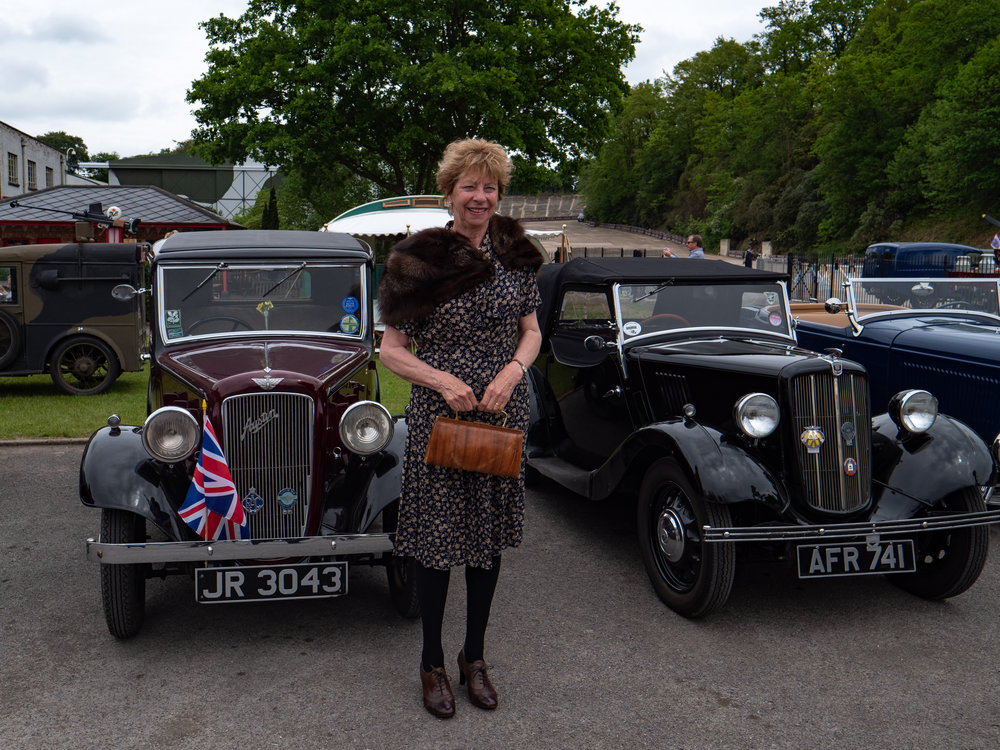
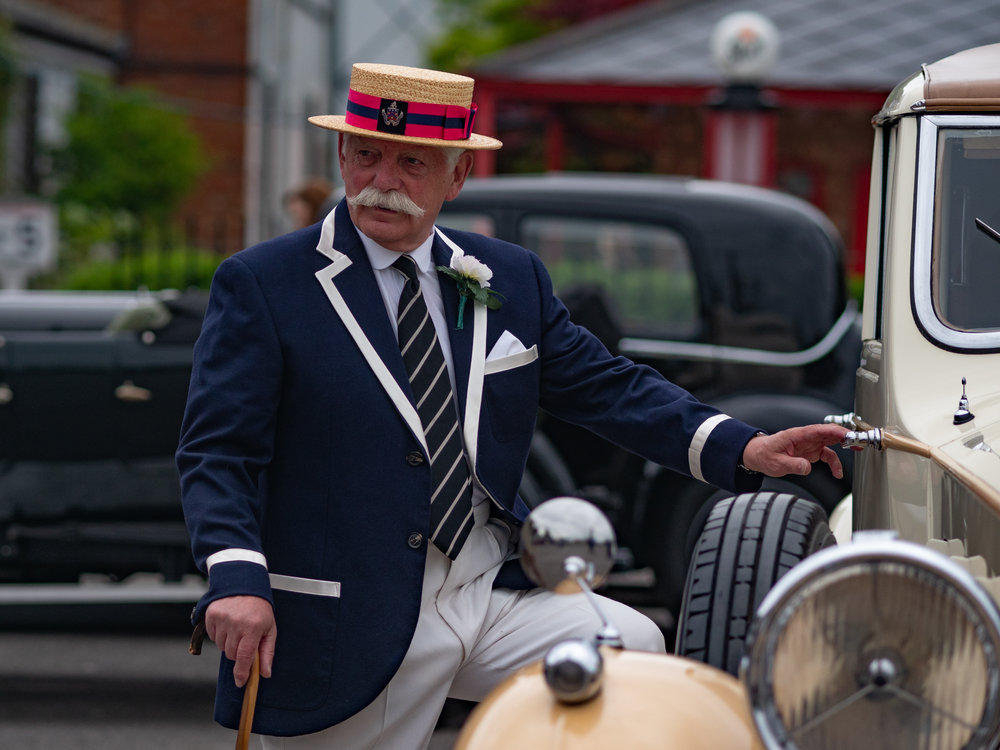
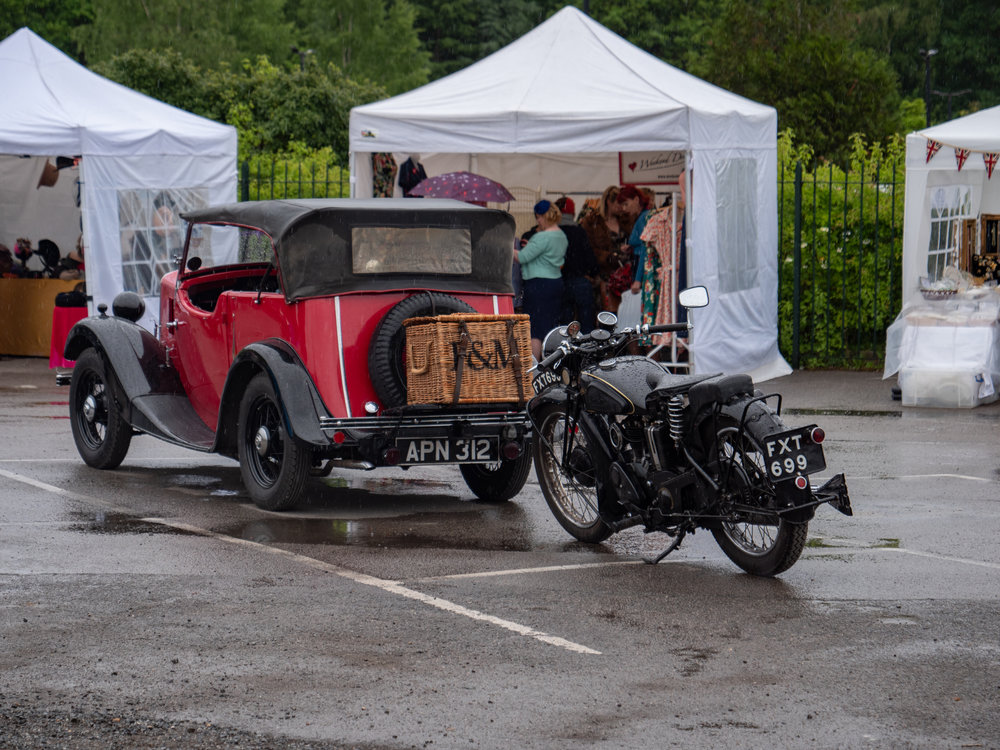

_________
- Subscribe to Macfilos for free updates on articles as they are published
- Want to comment on this article but having problems?

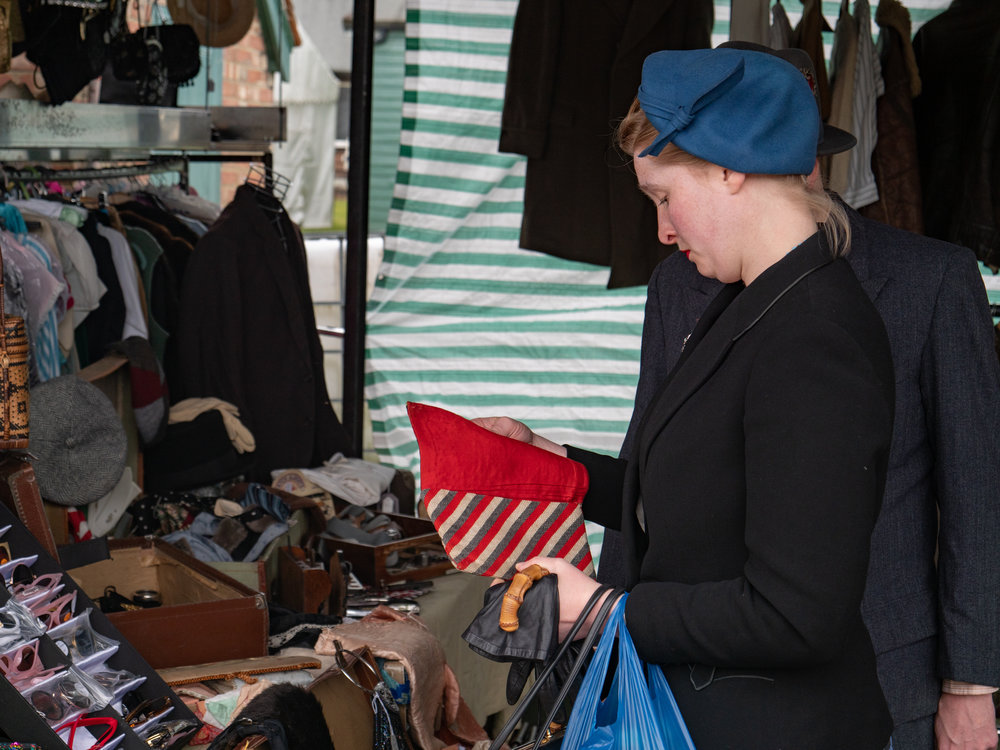
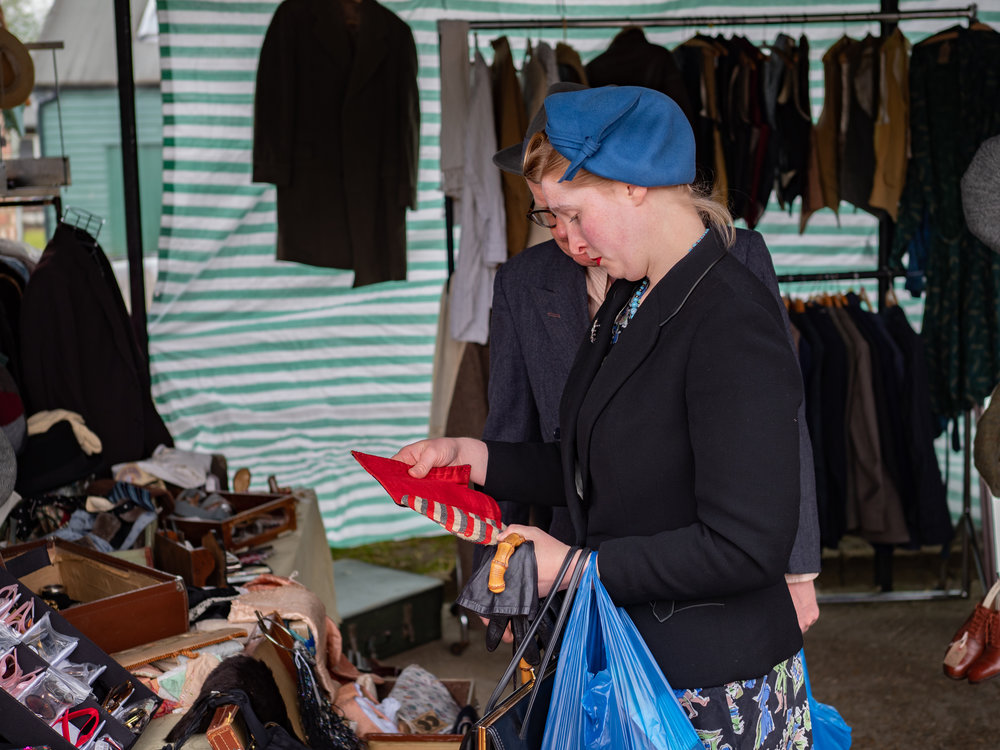
The chap in the blue suit with a red beard is holding an Argus C3 camera from the USA. It is ‘in period’ having been produced from 1939 to 1966. It was nicknamed ‘the brick’.
It is nice to see Mrs Mainwaring at last. She seems a lot less threatening ‘in the flesh’.
Both photographers and their cameras have done very well in bringing the ‘past’ to life. The only thing that shouts the present is the tattoo on the arm of one of the ladies, but I suppose that nostalgia ain’t what it used to be.
William
Thanks for adding this, William. I did have a long chat and he showed me the Argus and explained that he was using it on the day. I had meant to add it to the caption and your comment has now prompted me to do so. Thanks.
What a feeling of nostalgia, Mike, with some characters more comfortable with their roles than others. While I see a place for long focus lenses, they do deprive the viewer of context when telling a story.
You speak of and feature a ‘refugee ‘, but for the period portrayed I feel ‘evacuee ‘ would be more accurate term and more in keeping with the theme. A fine set of pictures from your team.
David, Thanks. You are absolutely right on evacuee. I used refugee probably because we hear it so much these days. The children were in fact called evacuees and I should have realised this. I will amend now and thanks for pointing it out. Also, your kind comments and observations are well received. I think with the 75 Ken in particular was aiming for portrait shots rather than shots with context. It’s a good point, though.